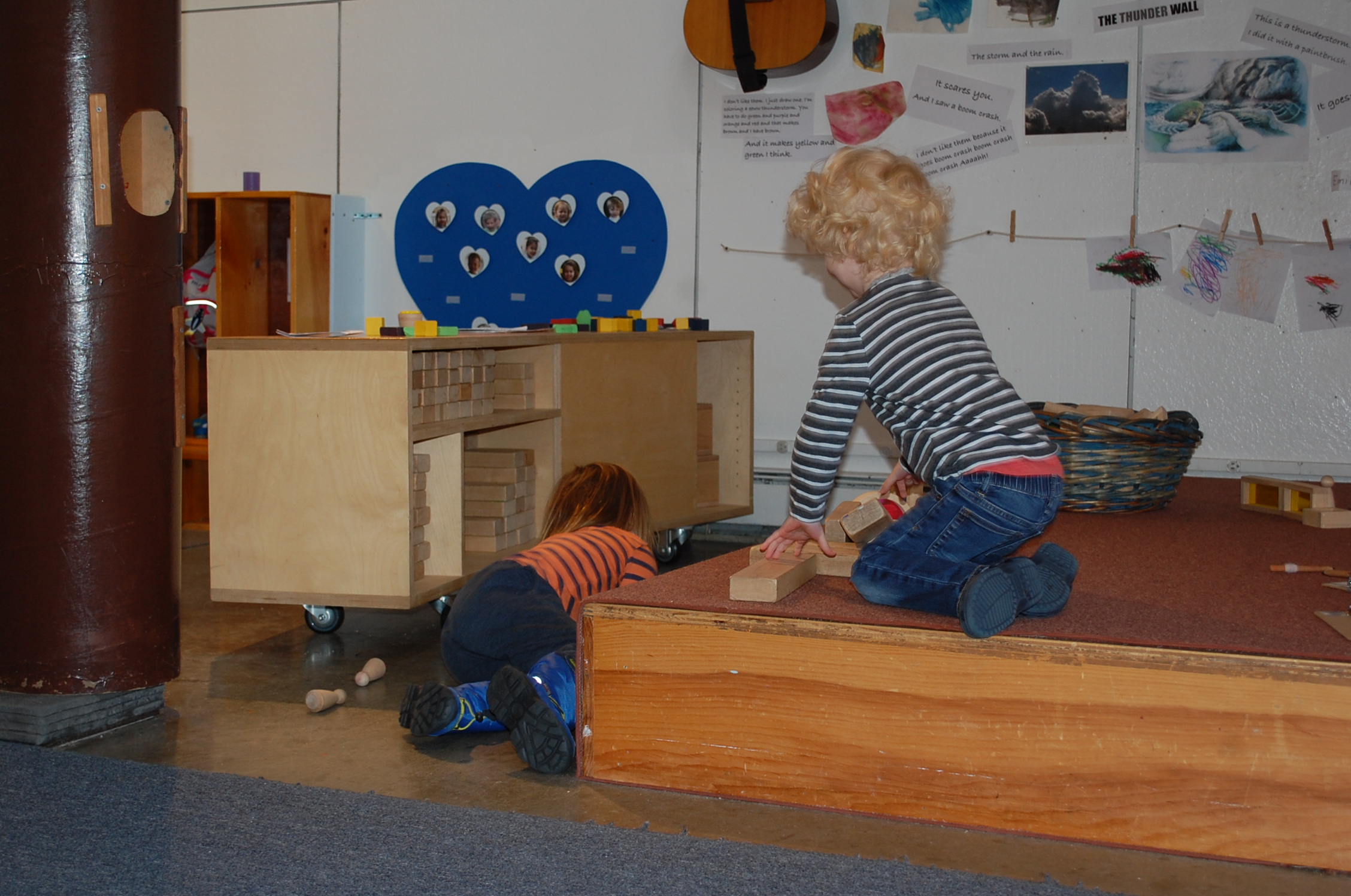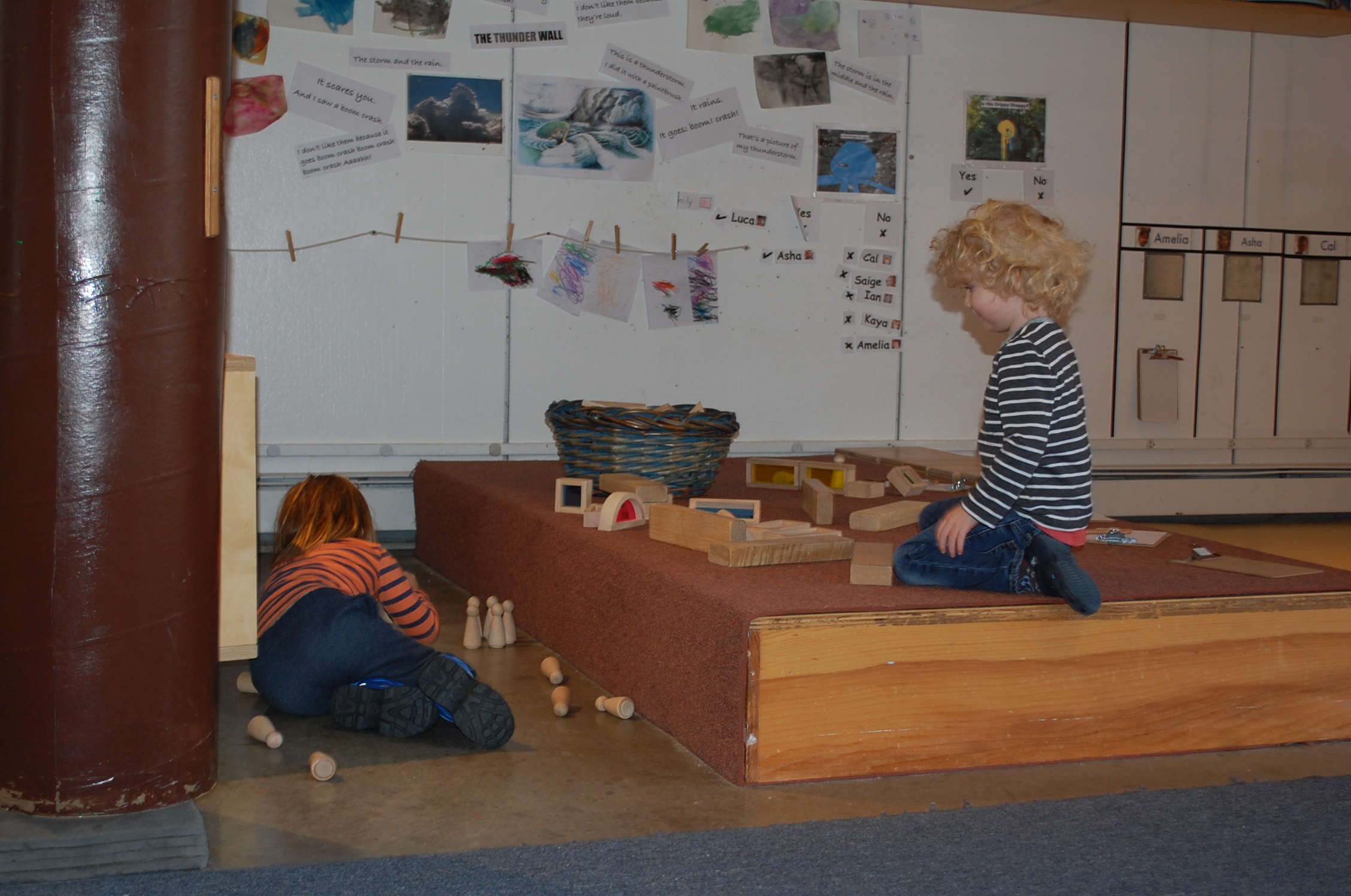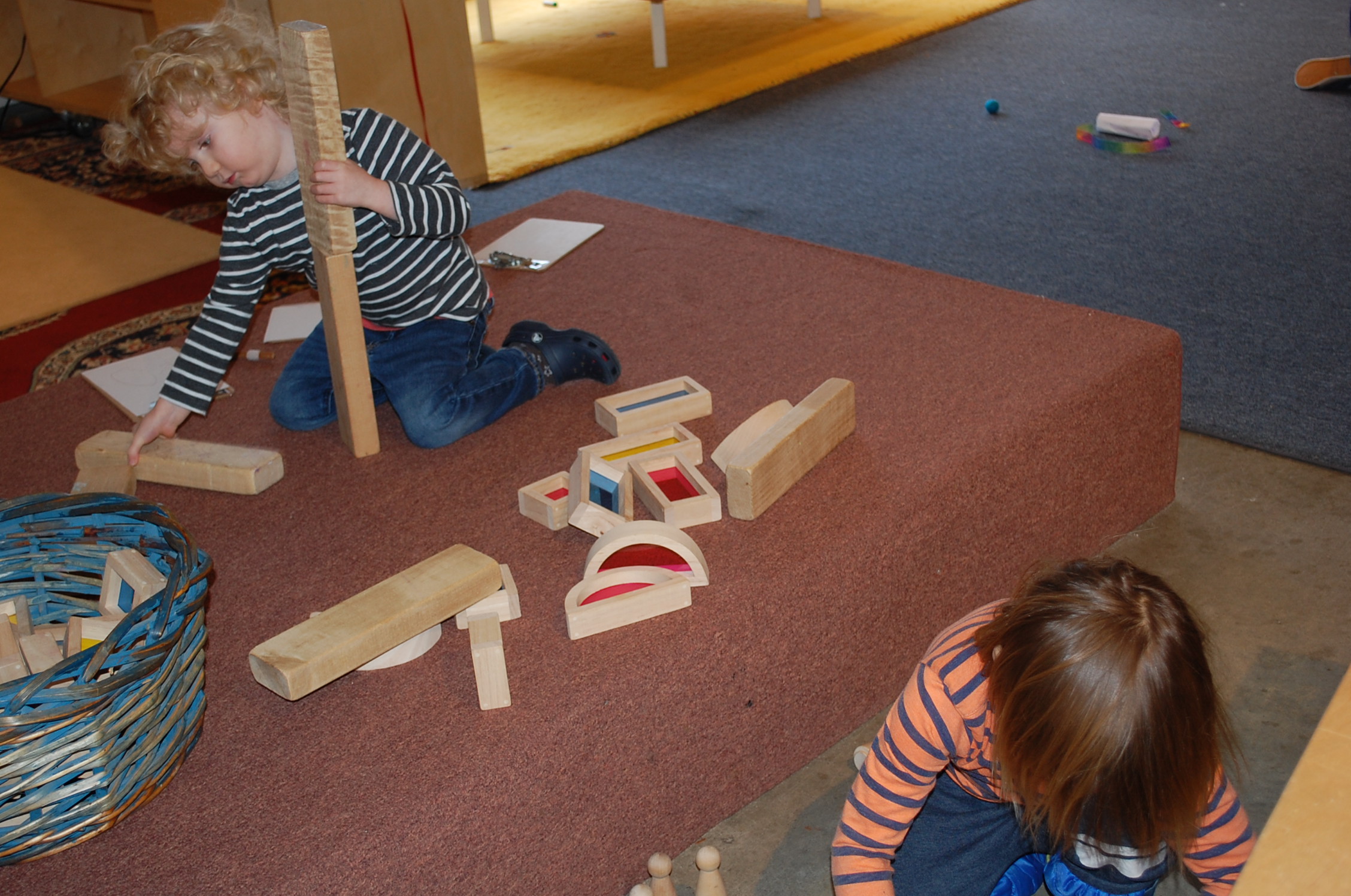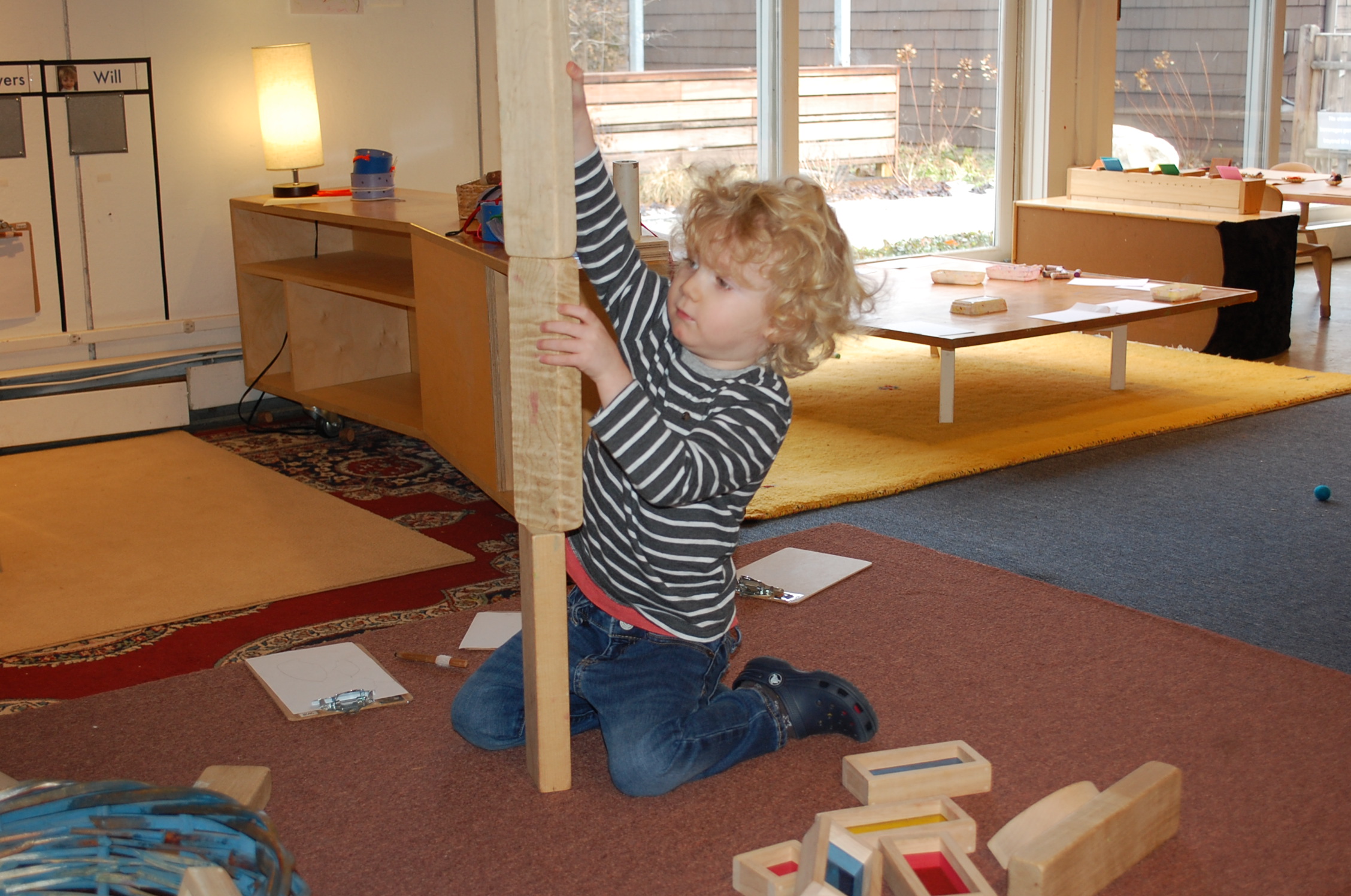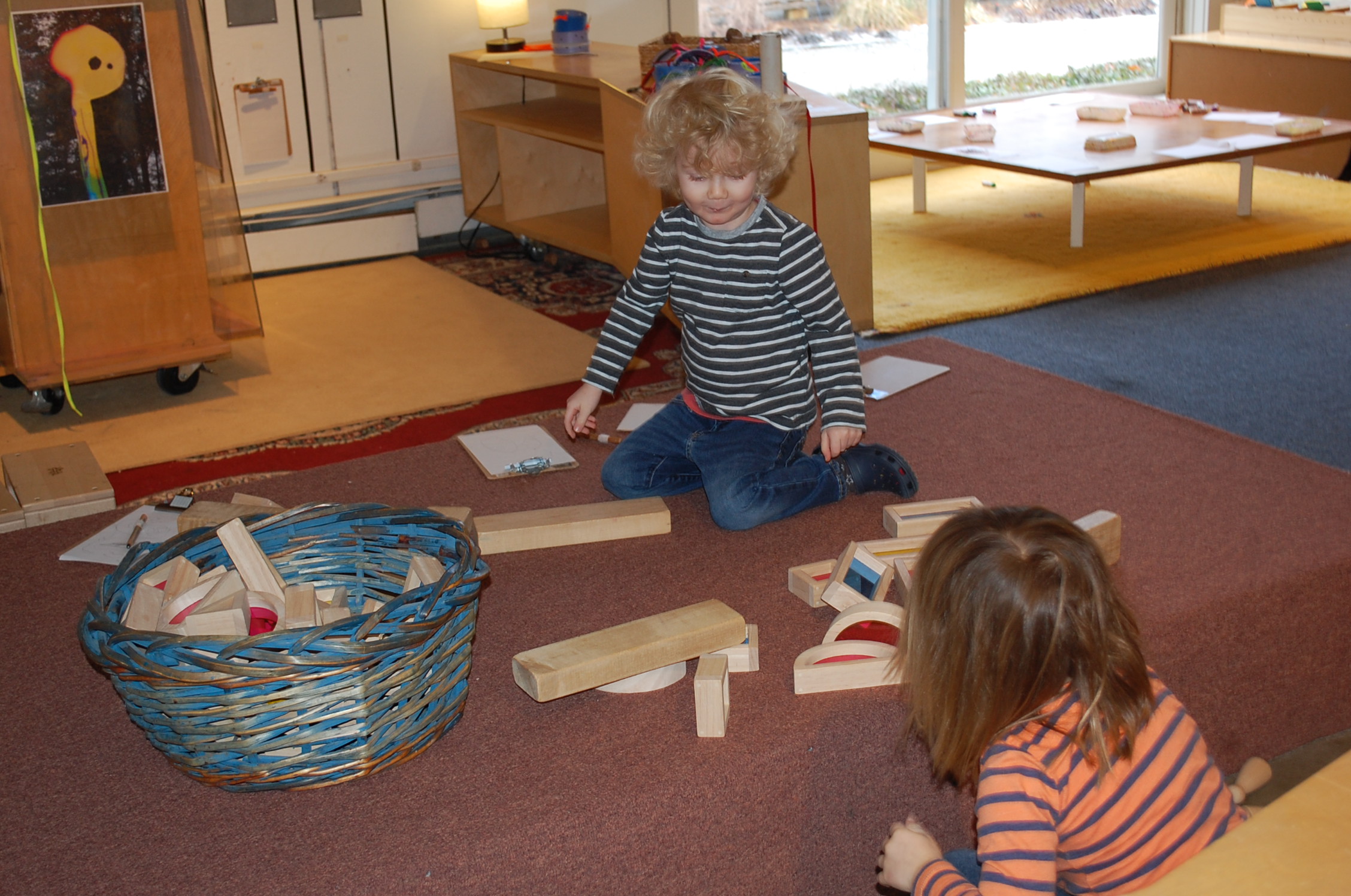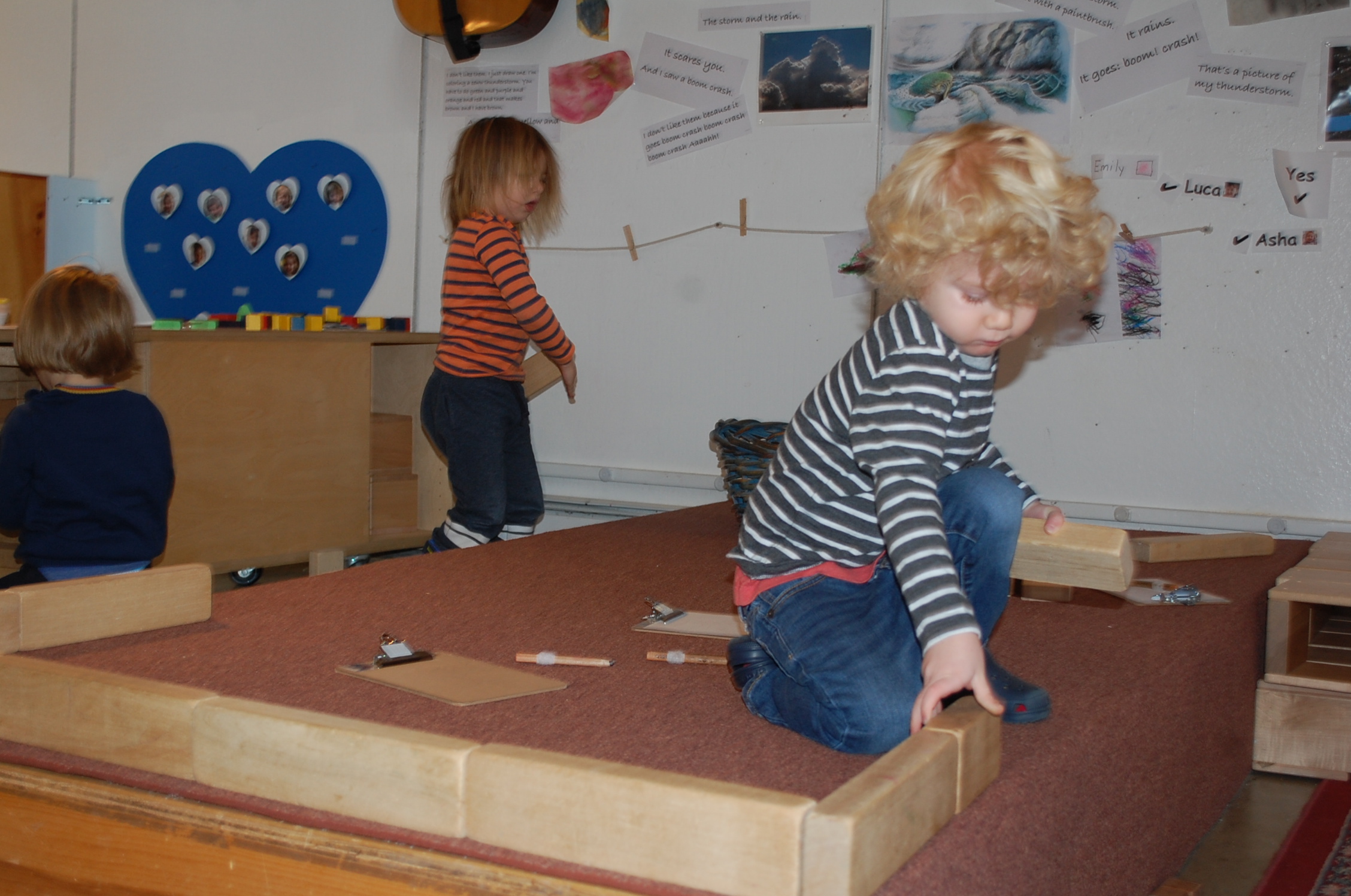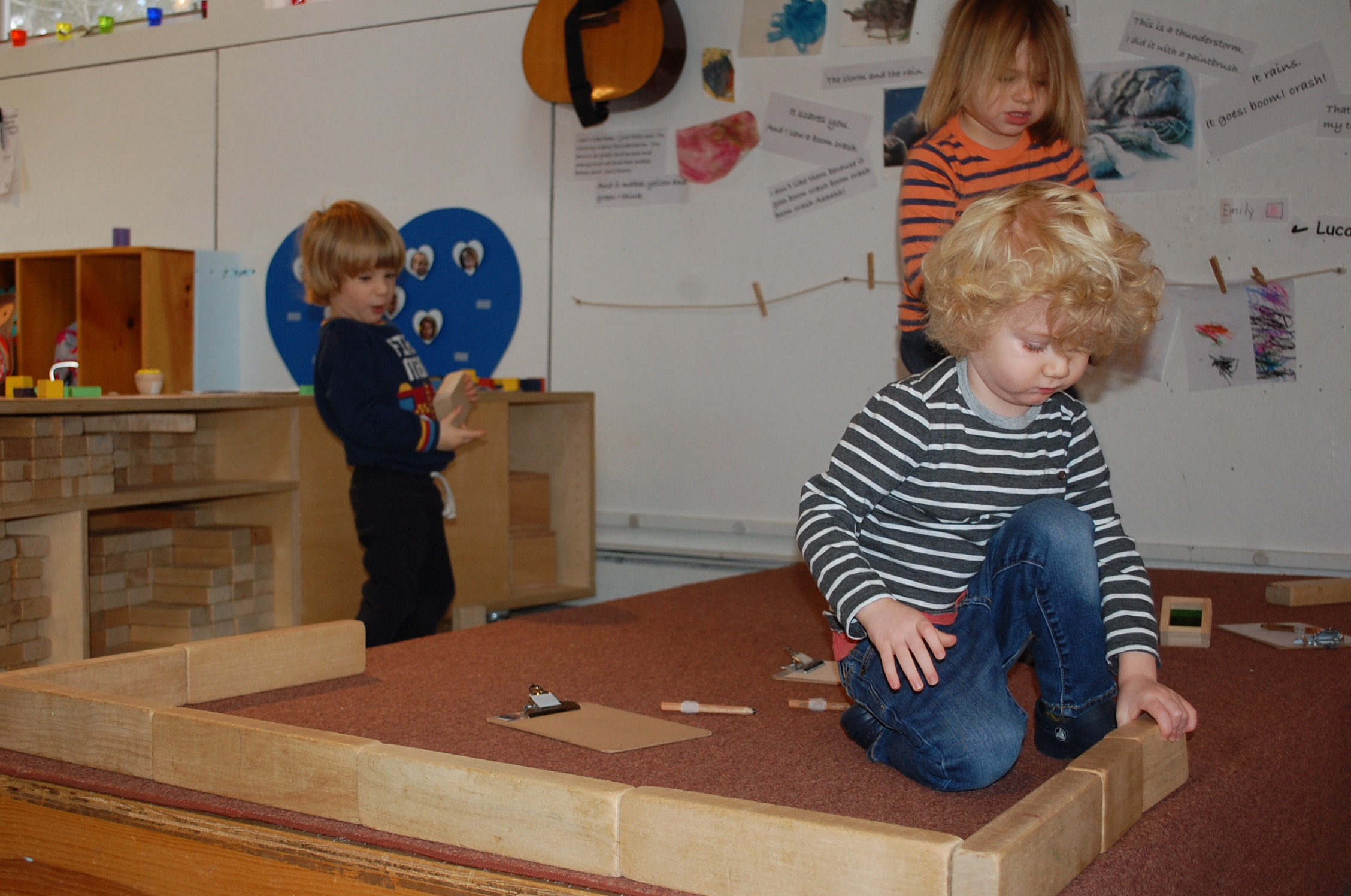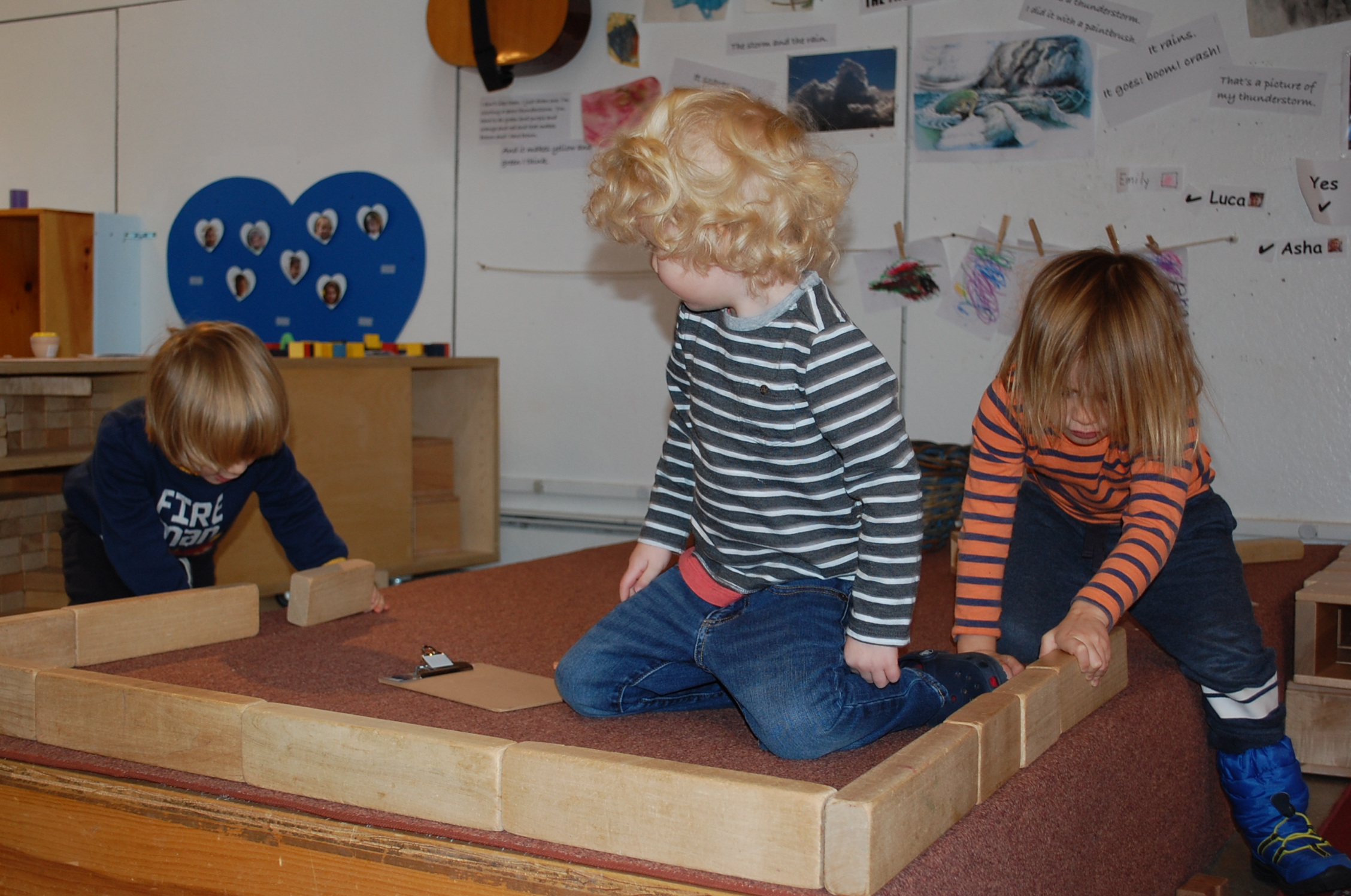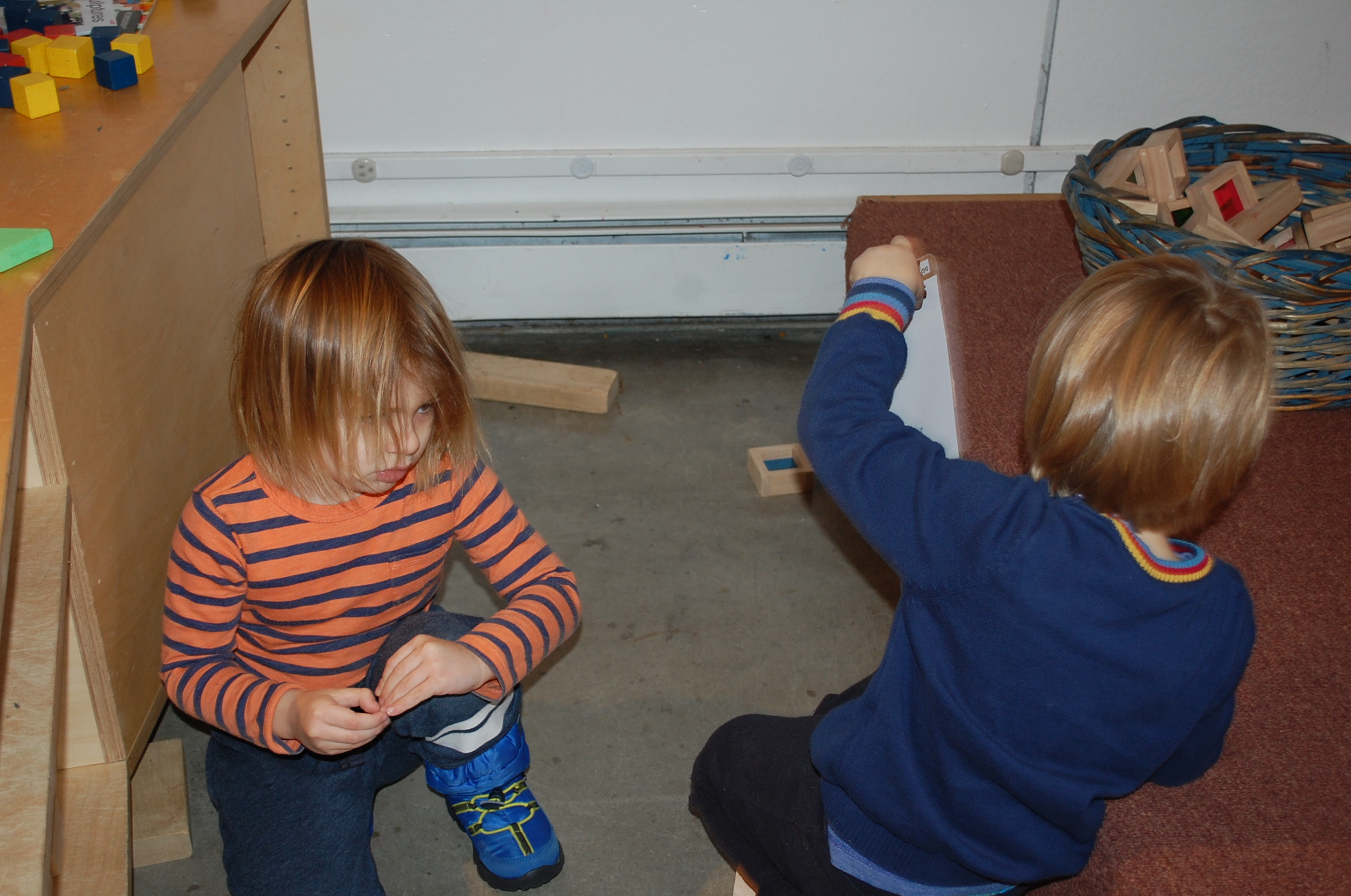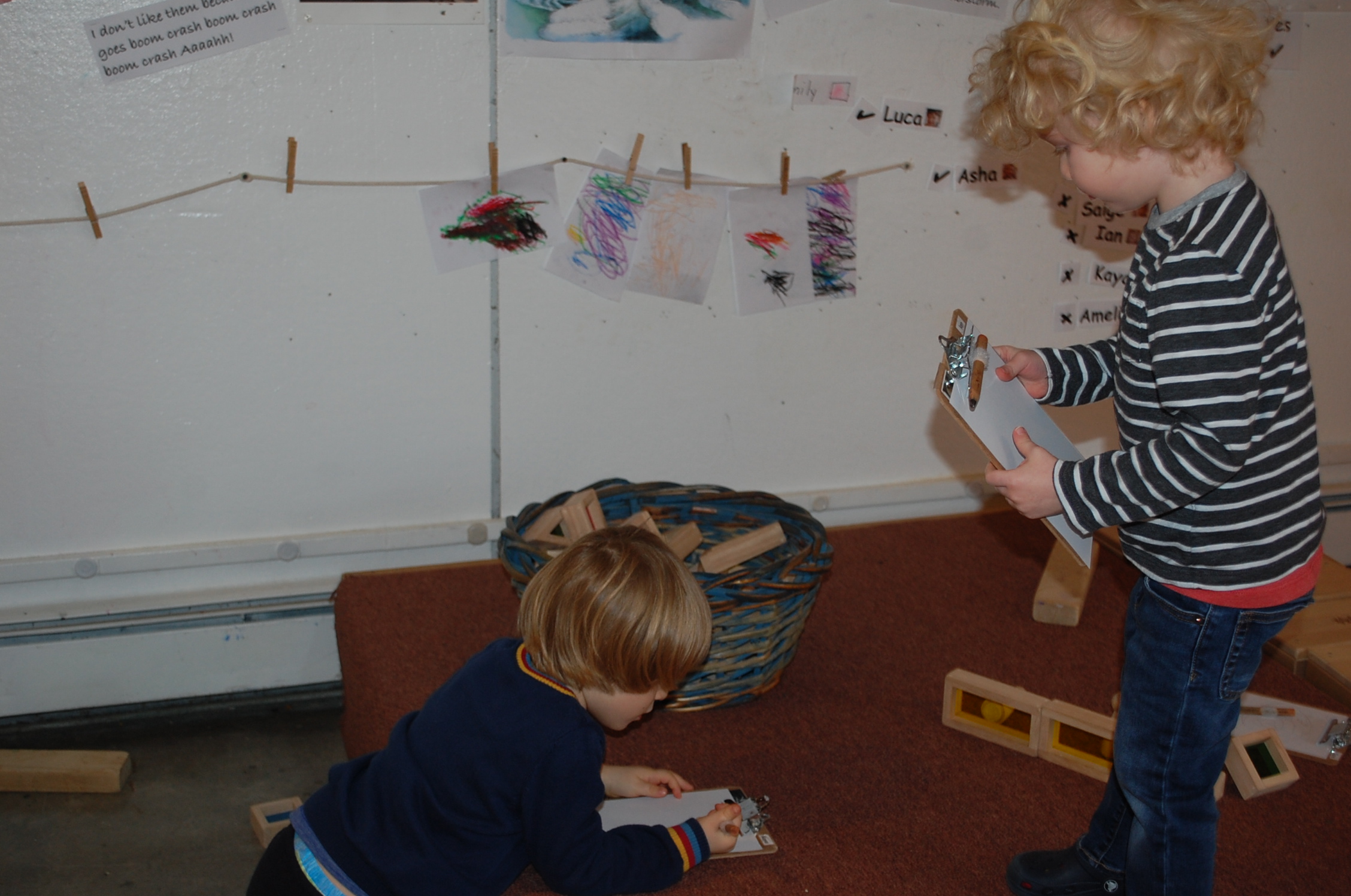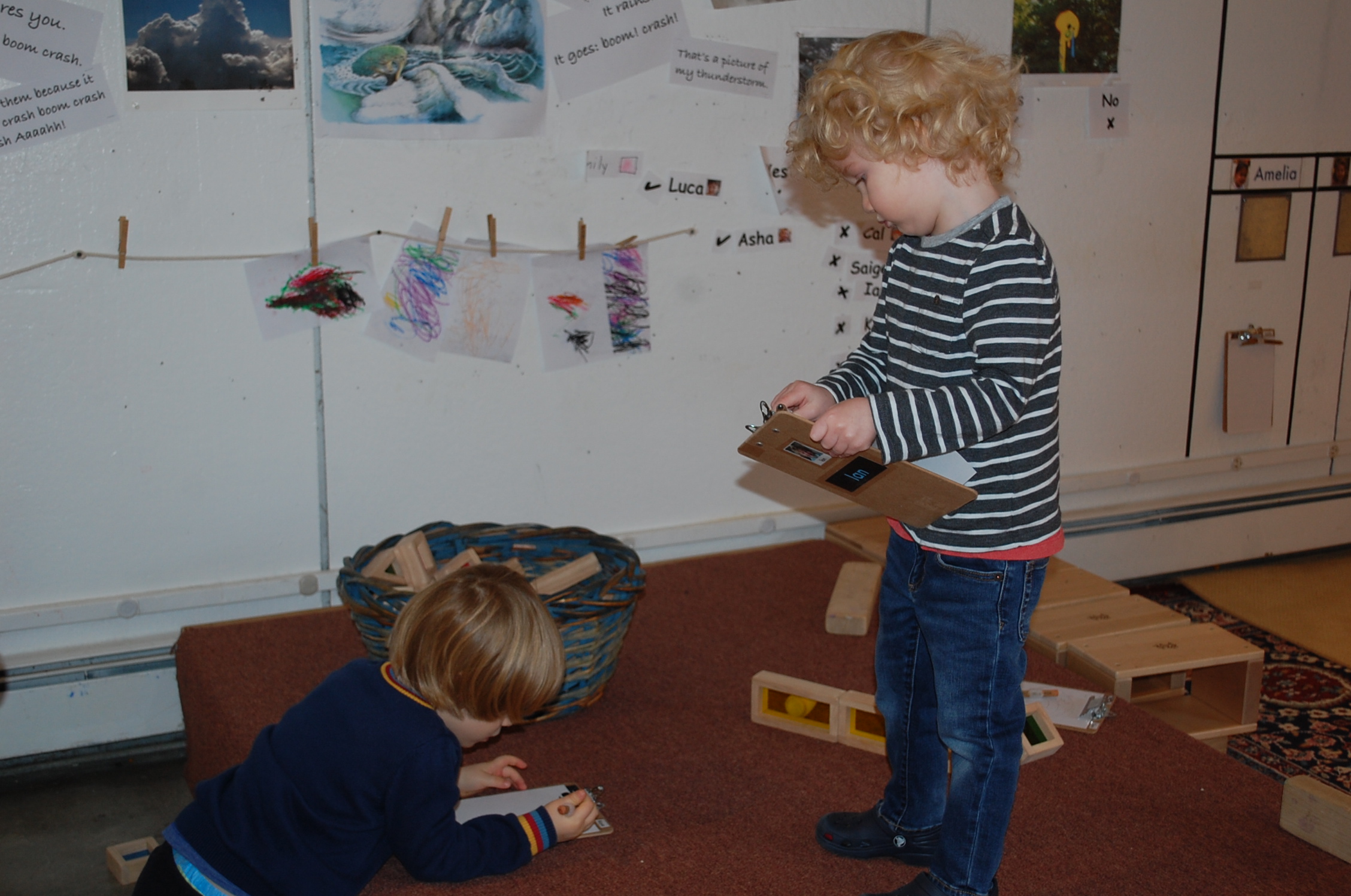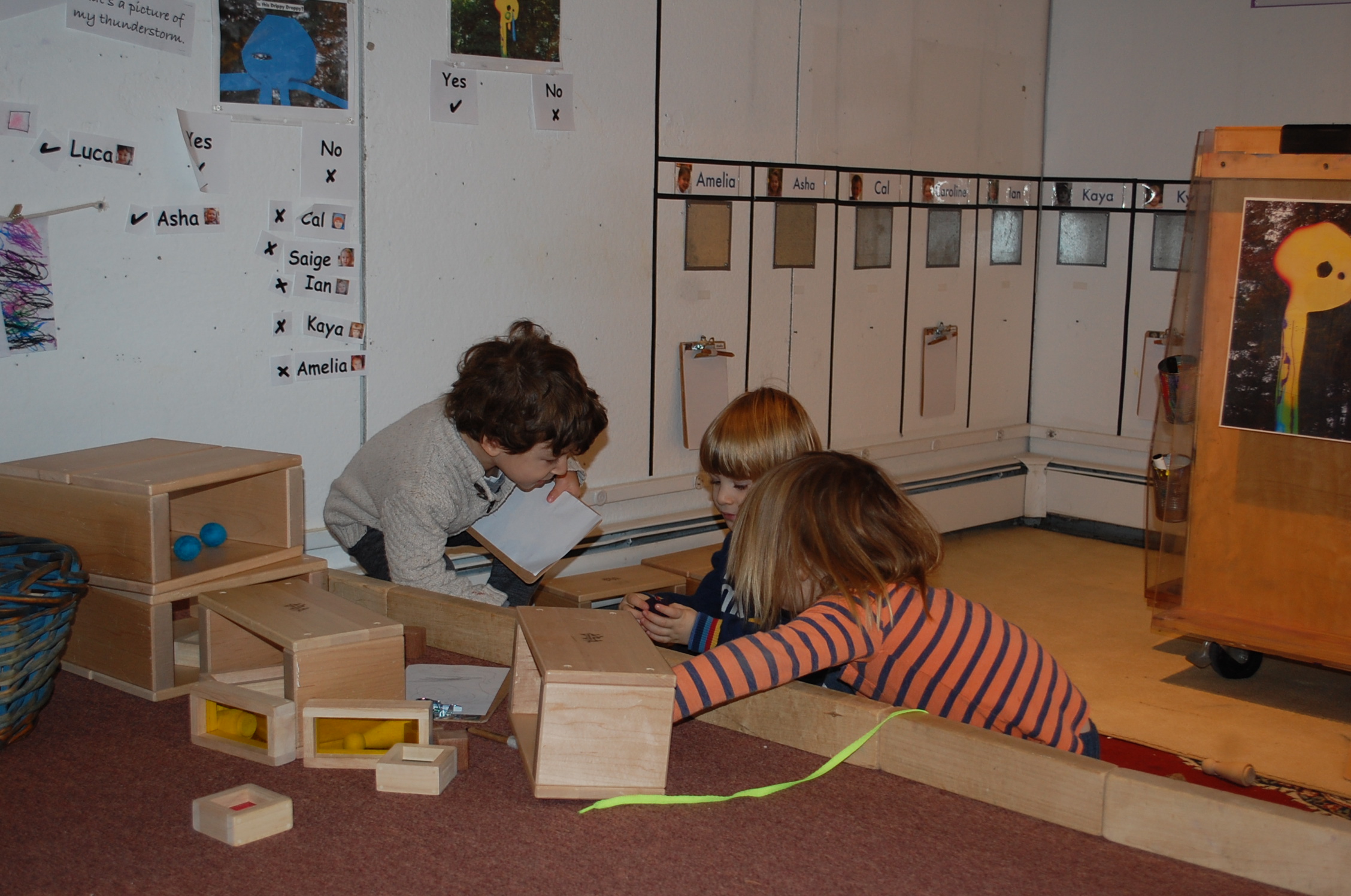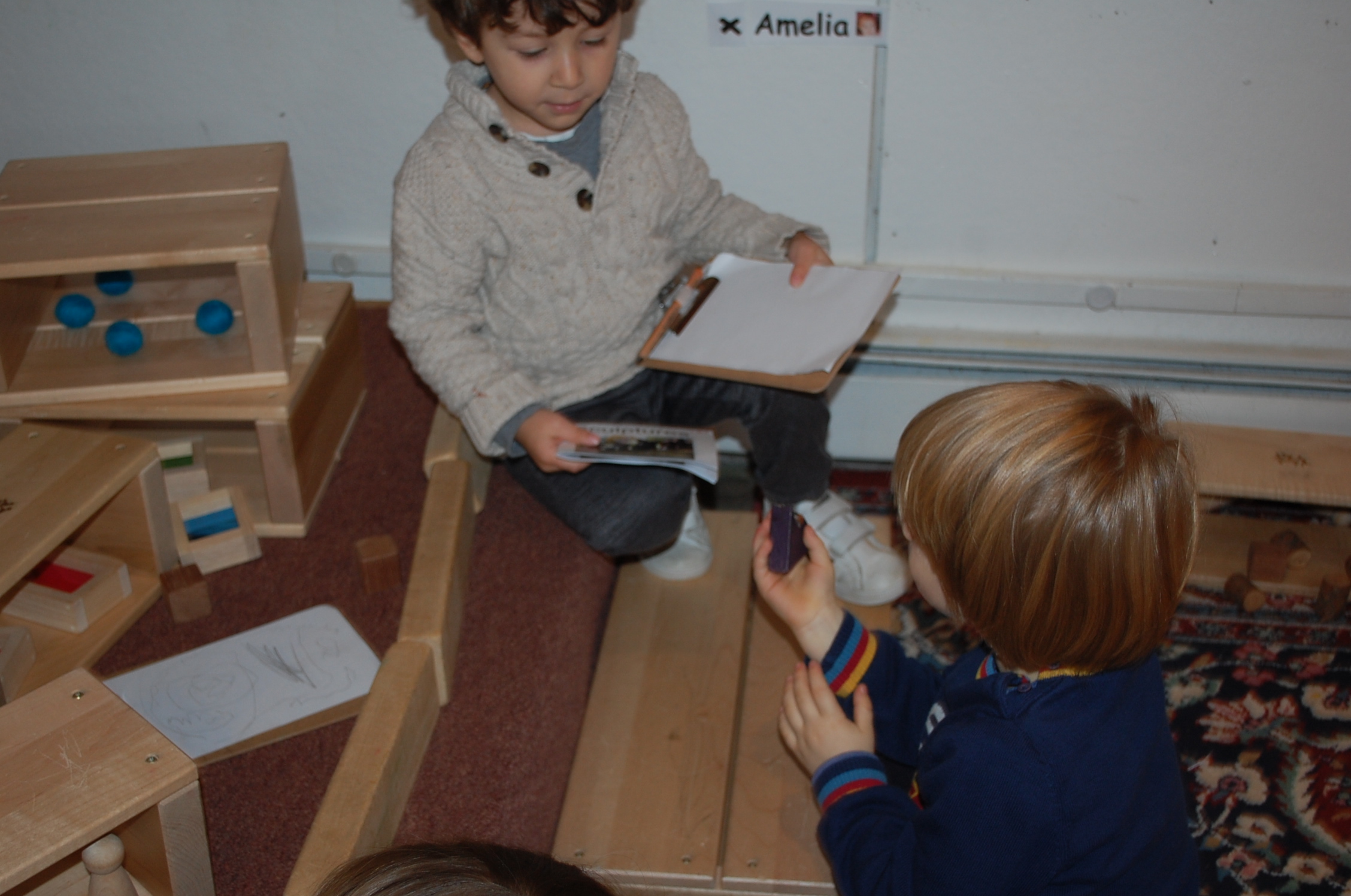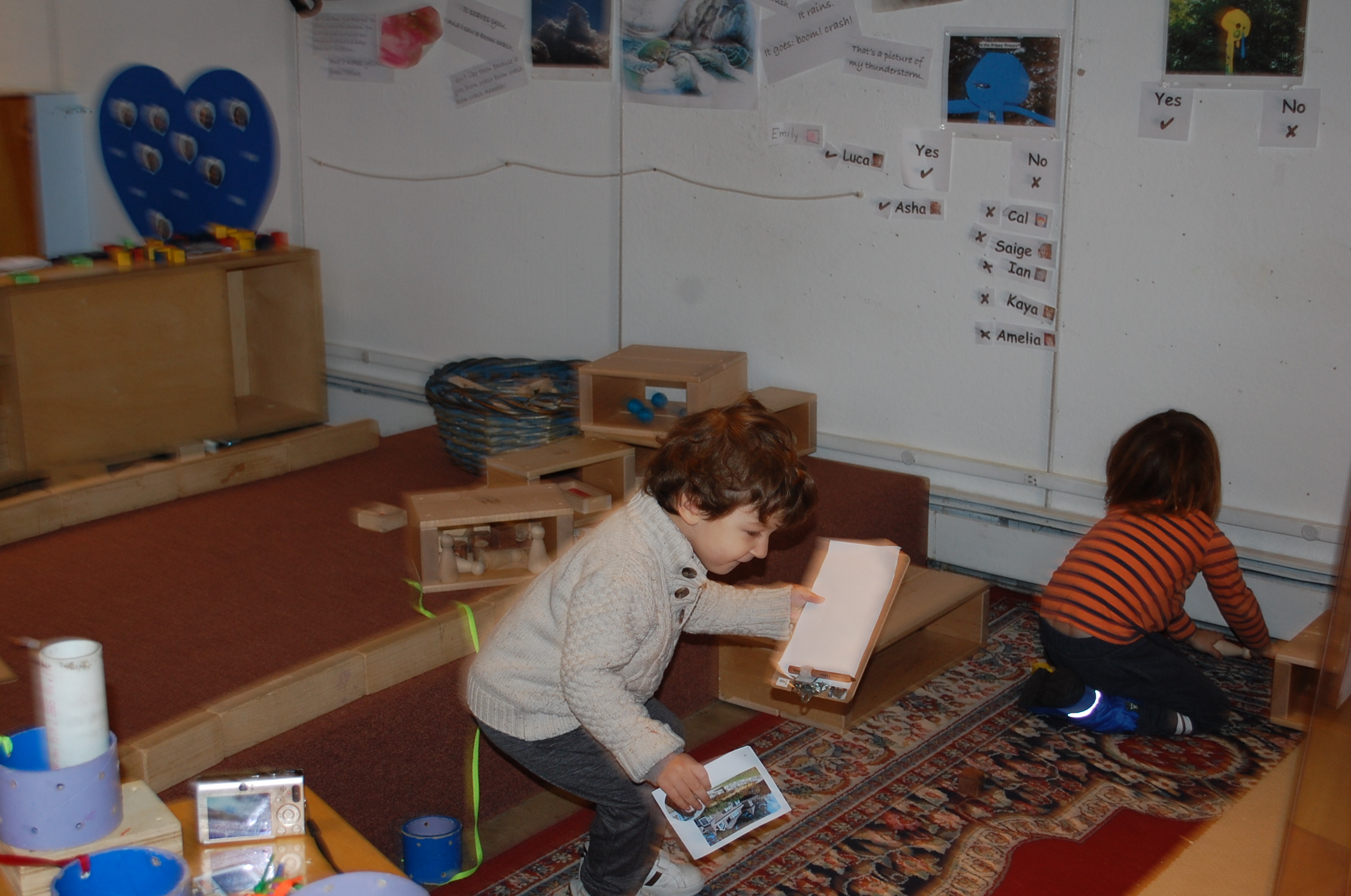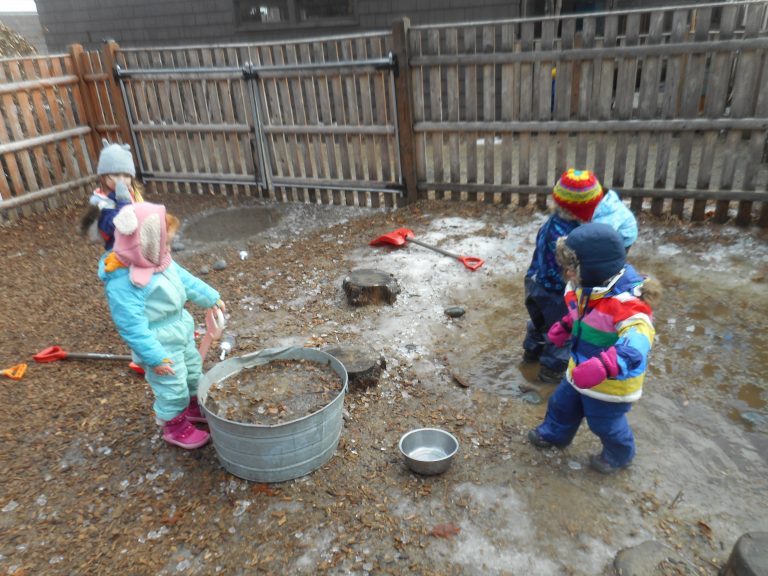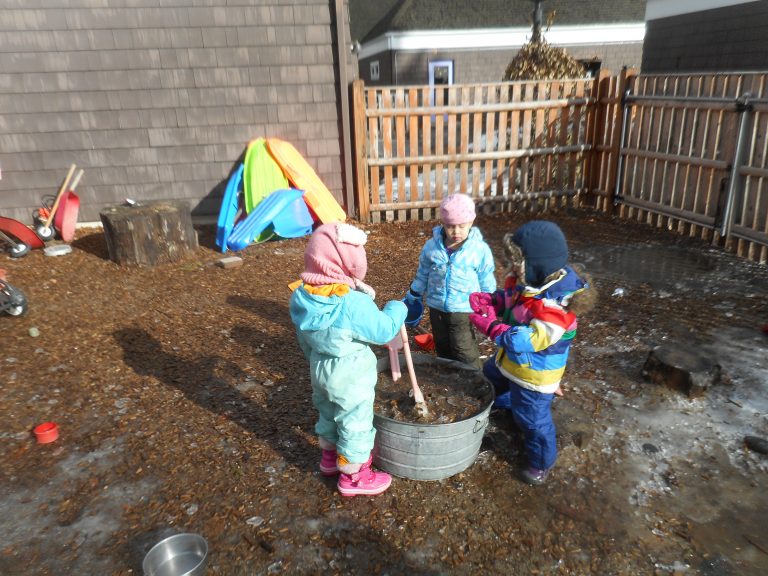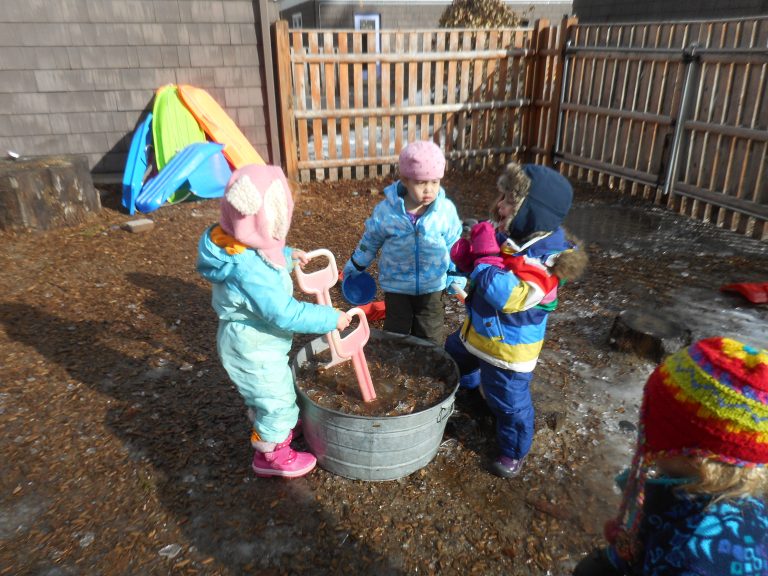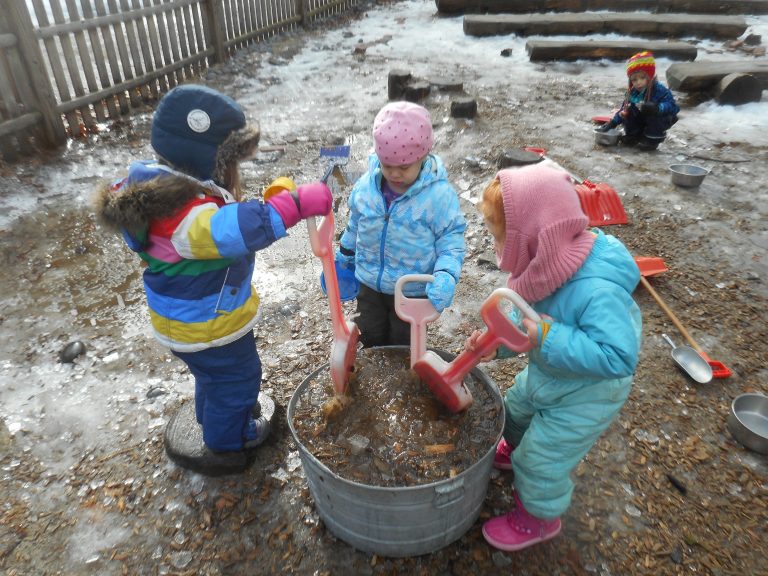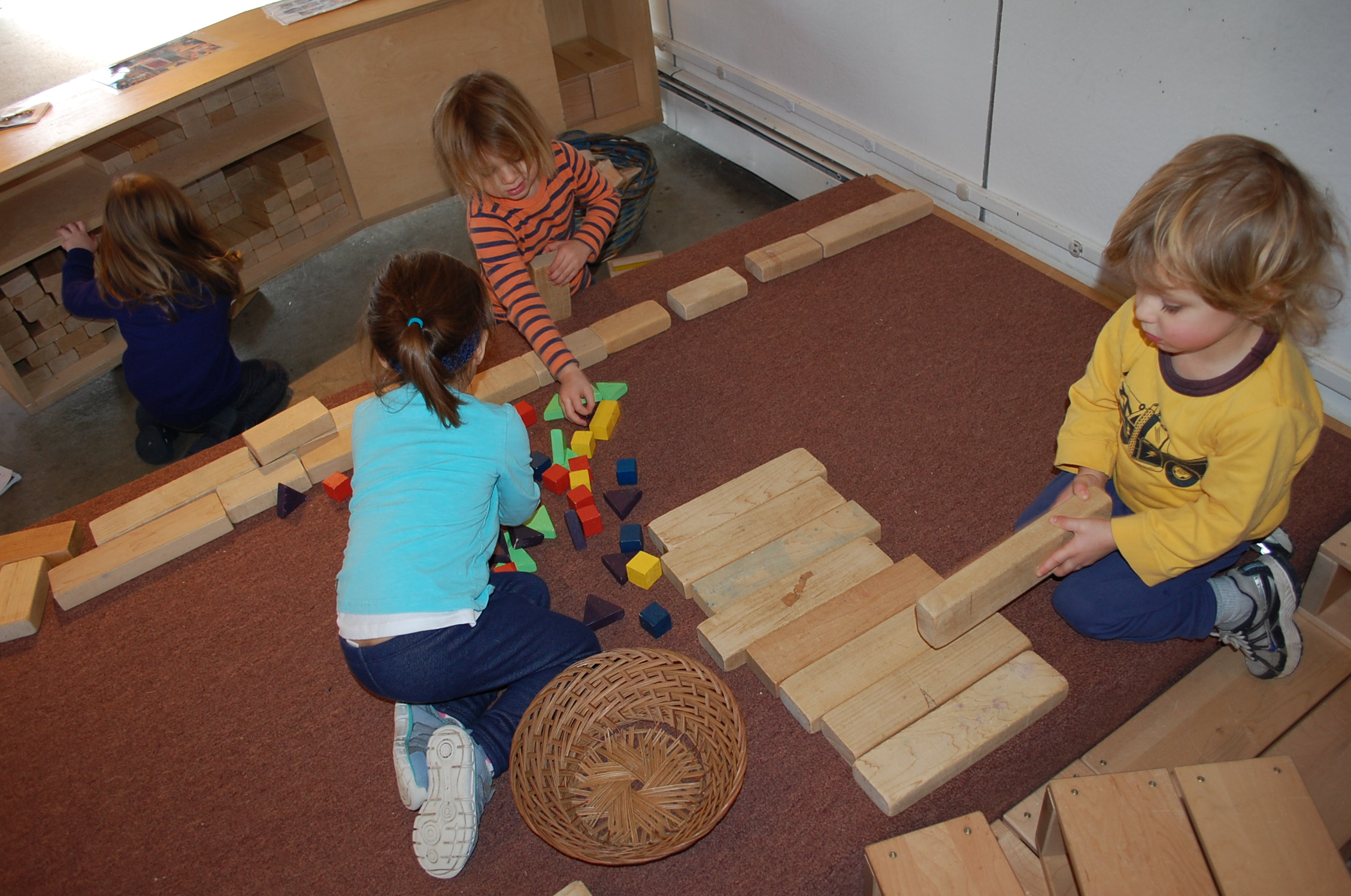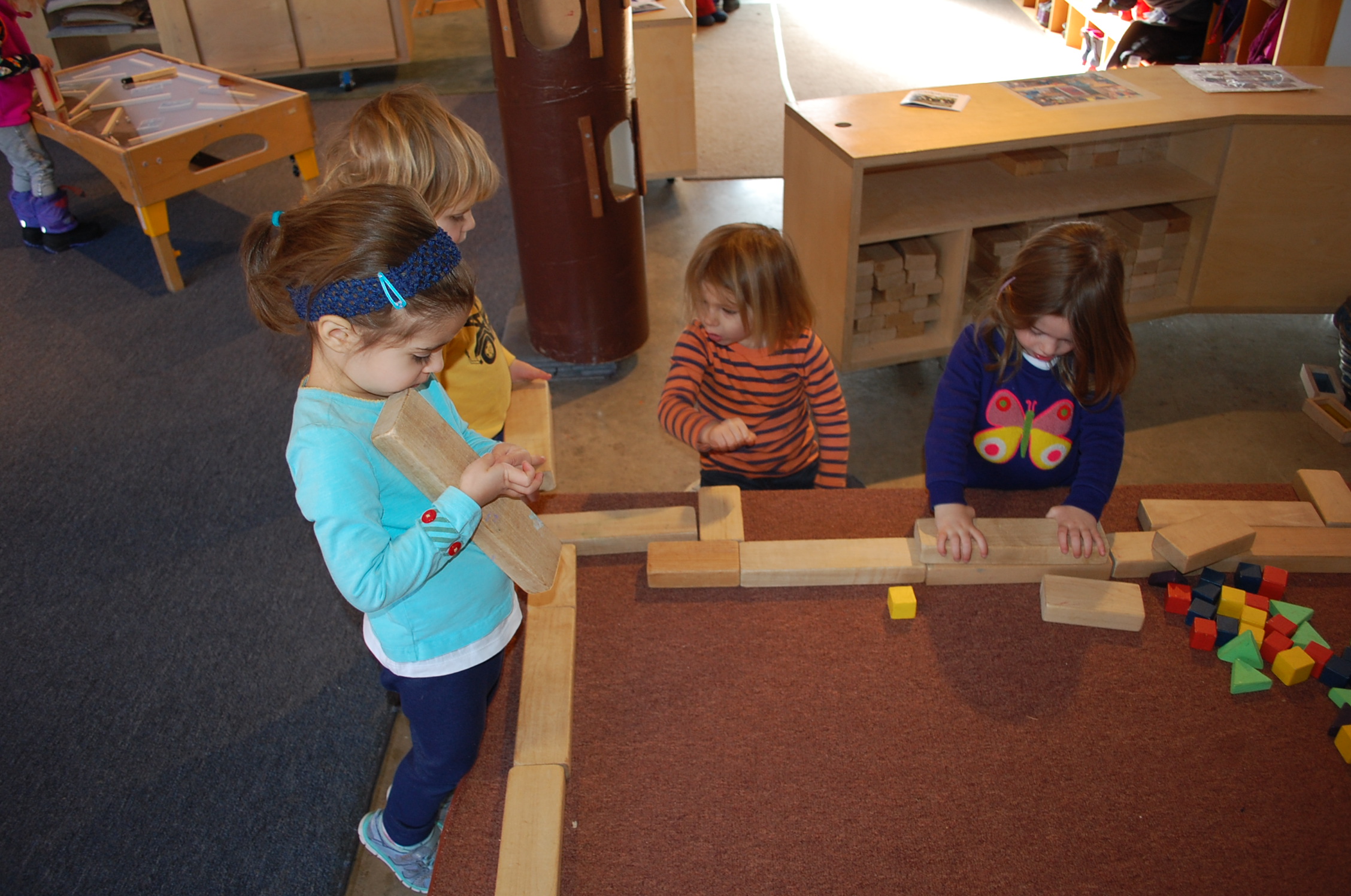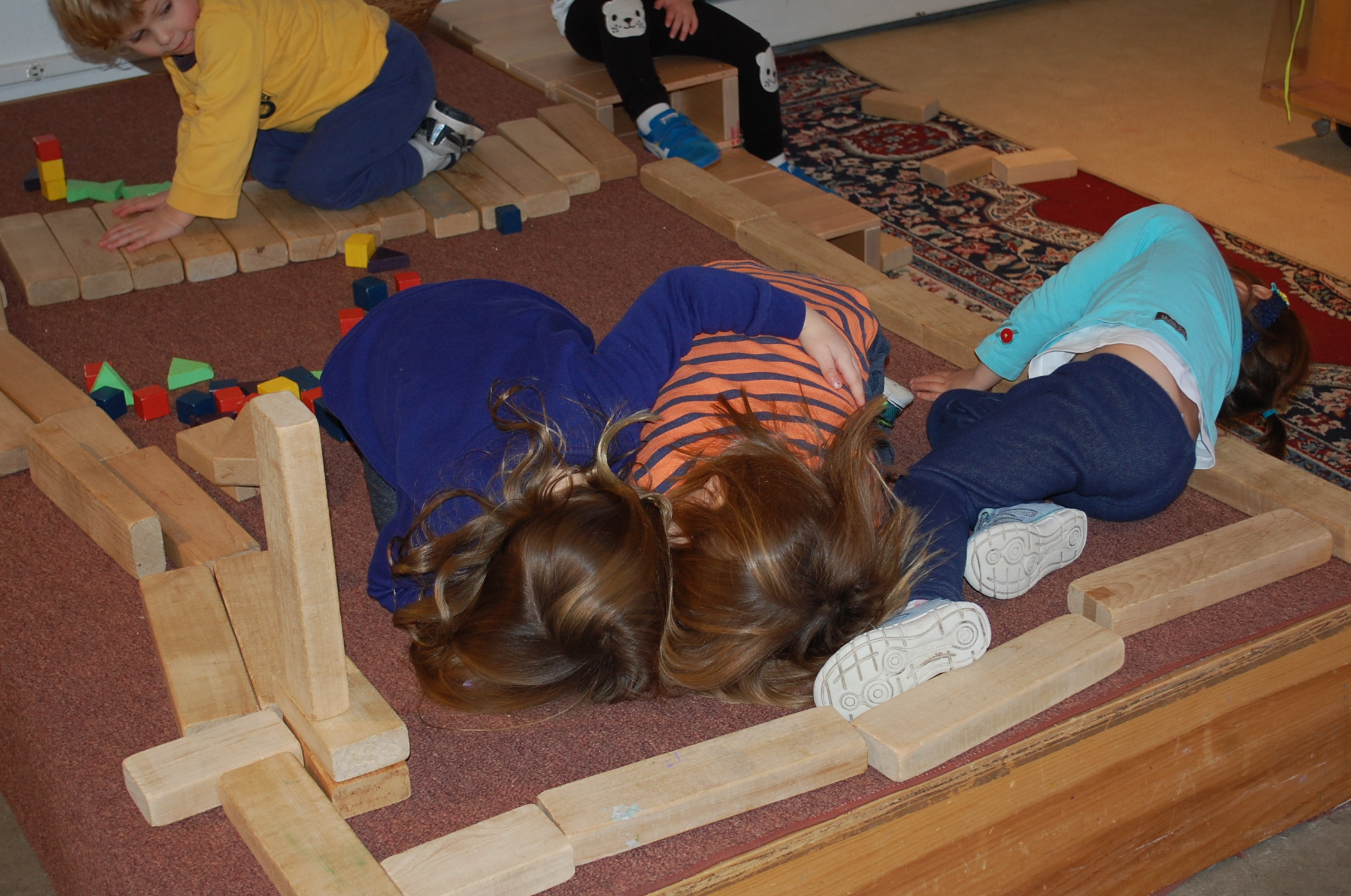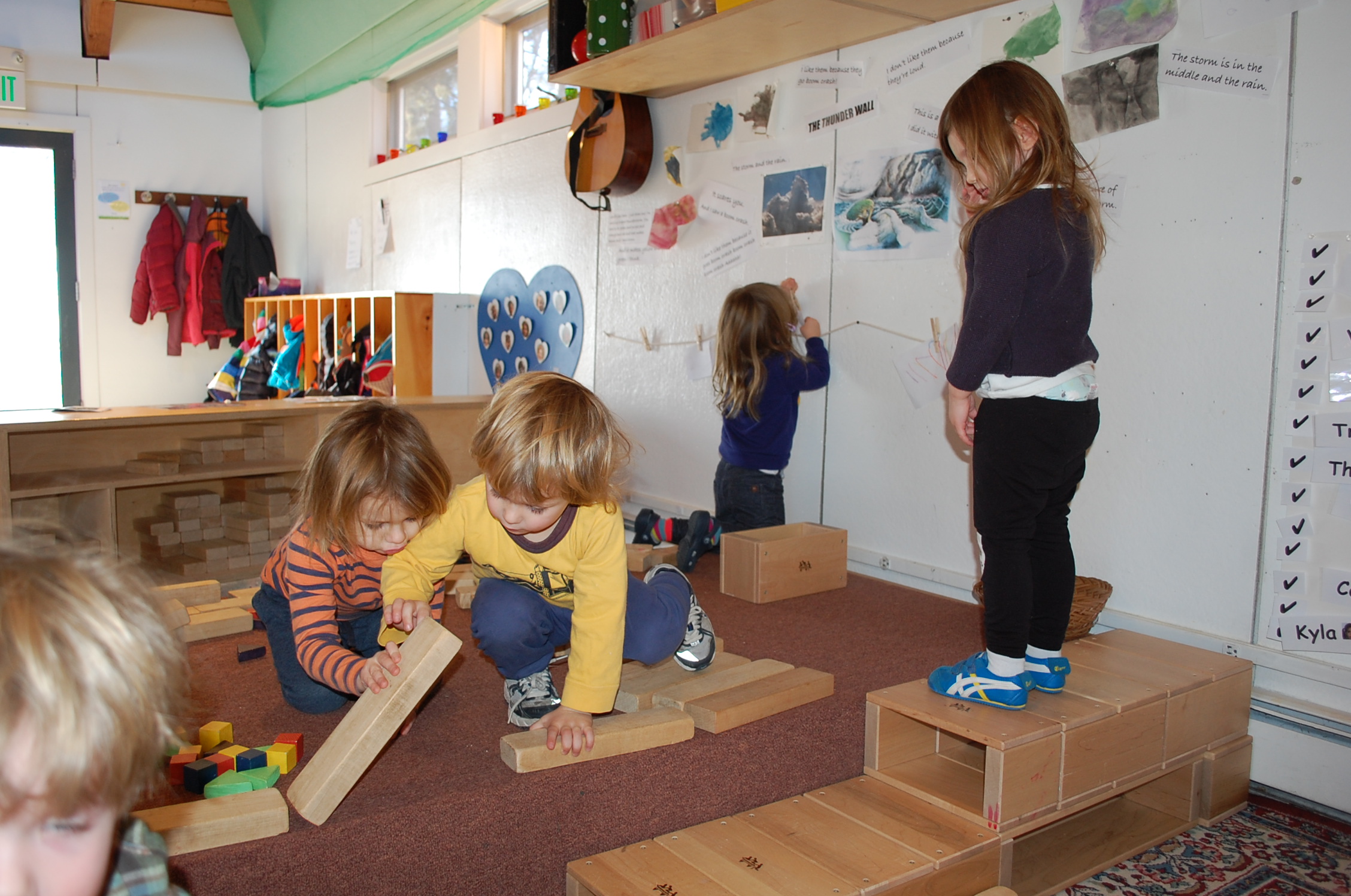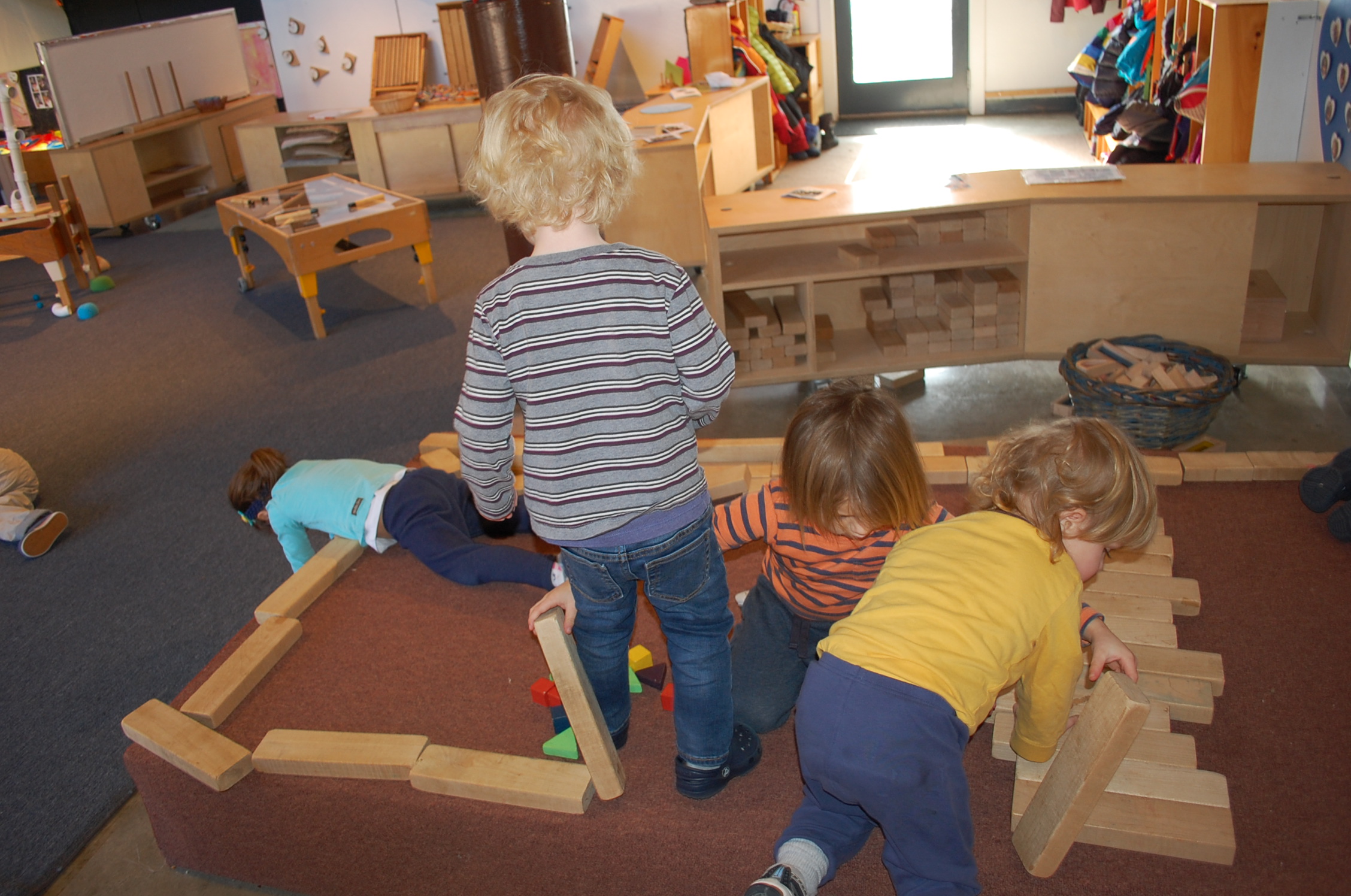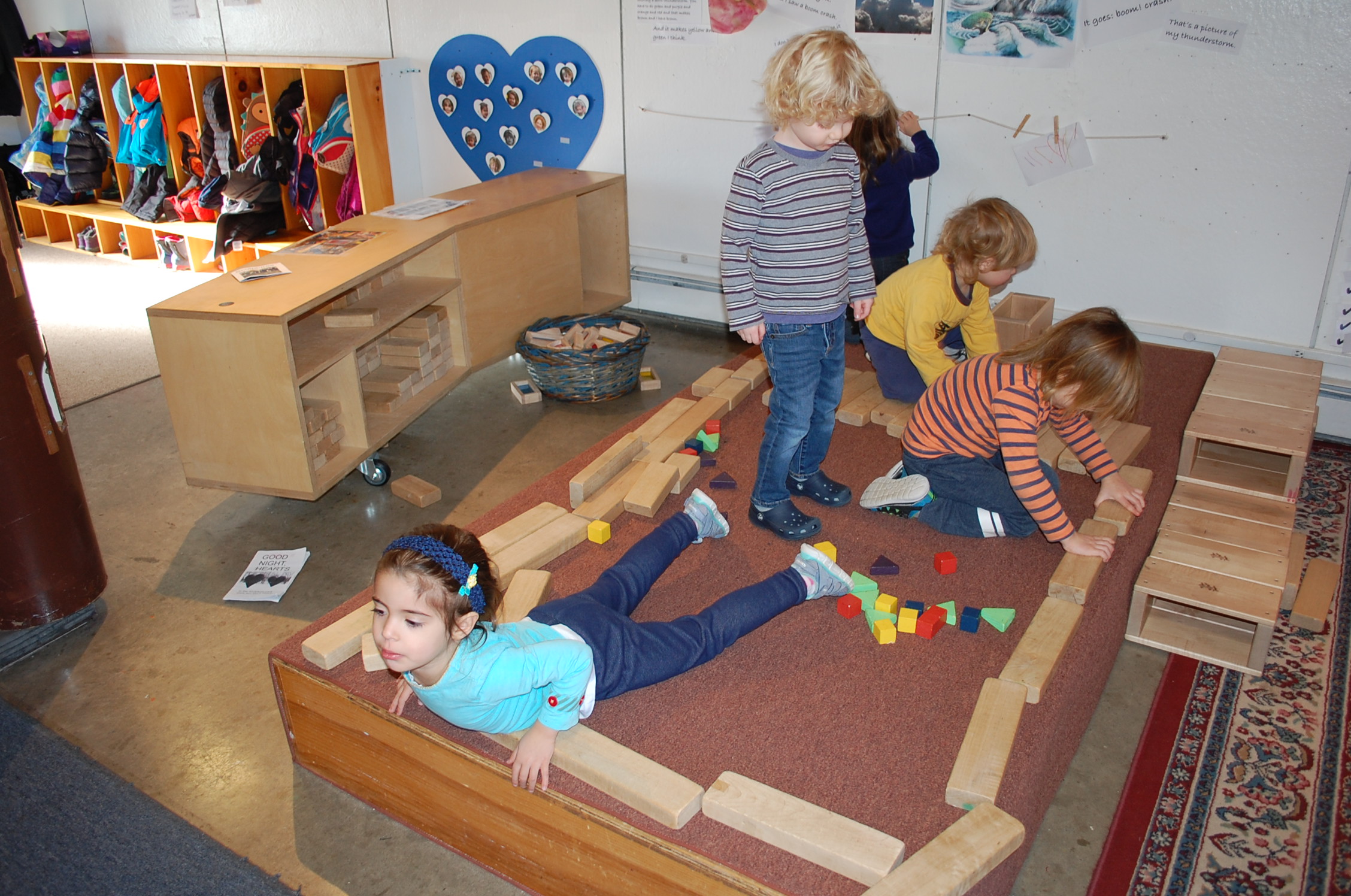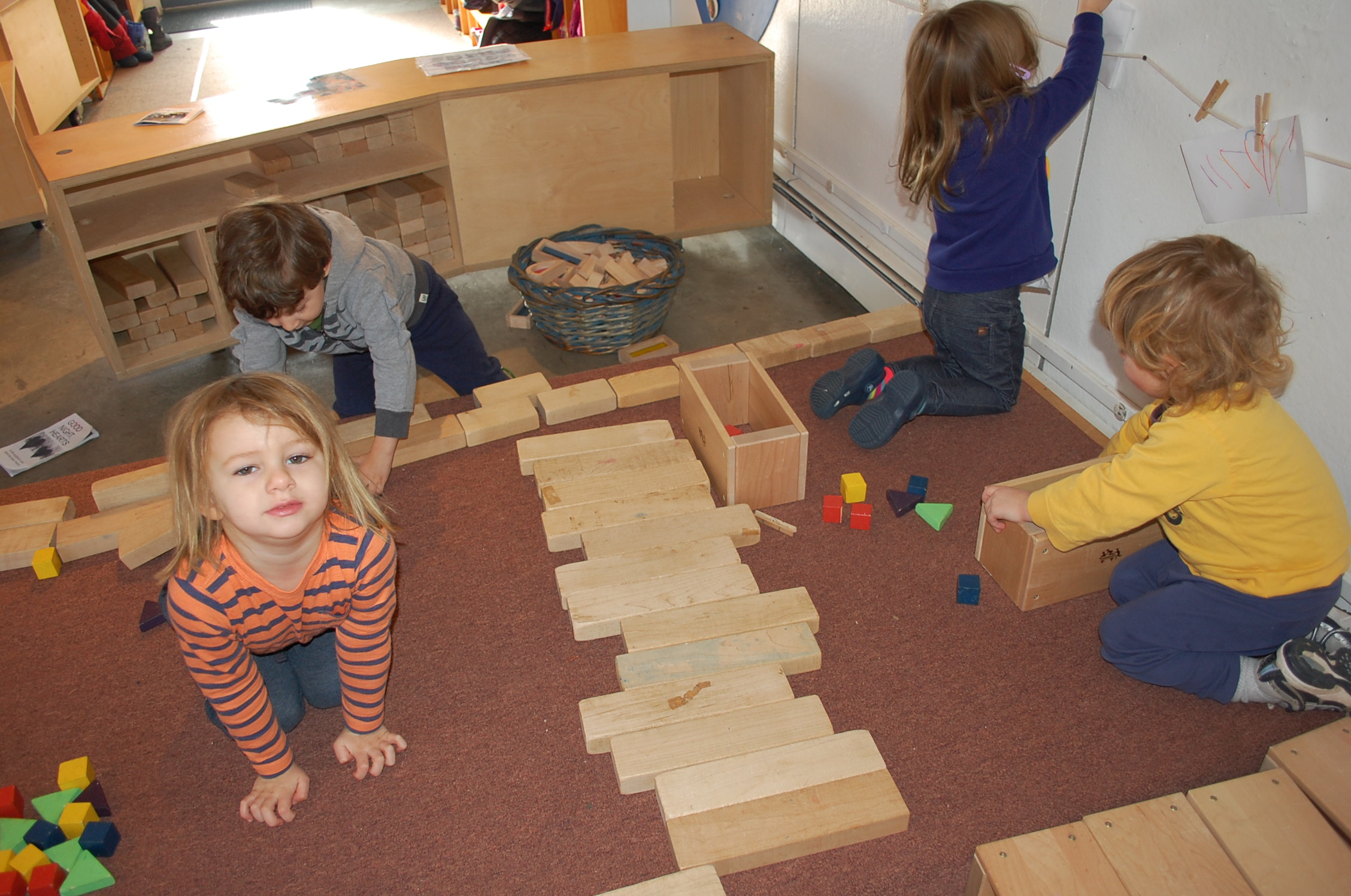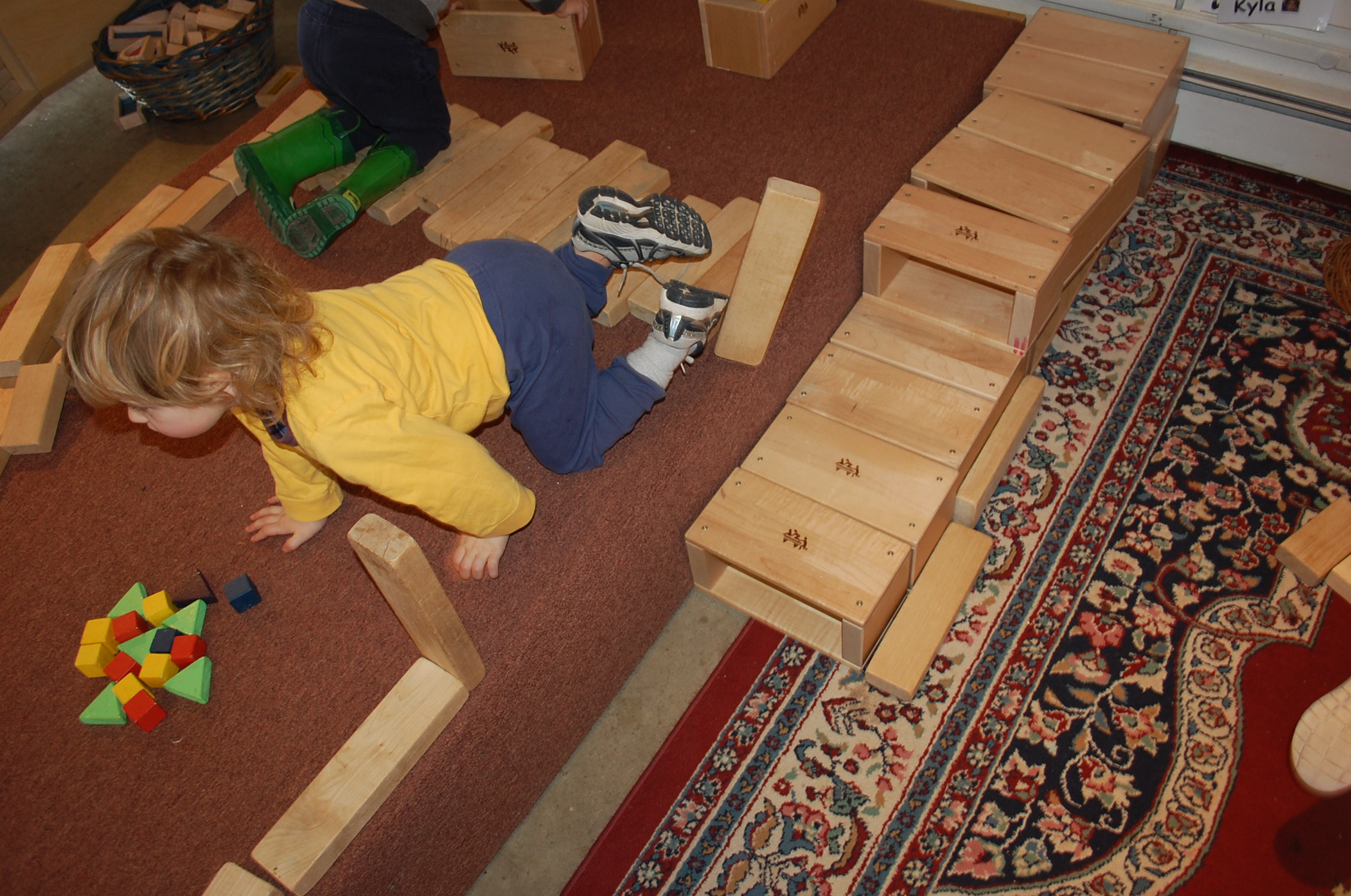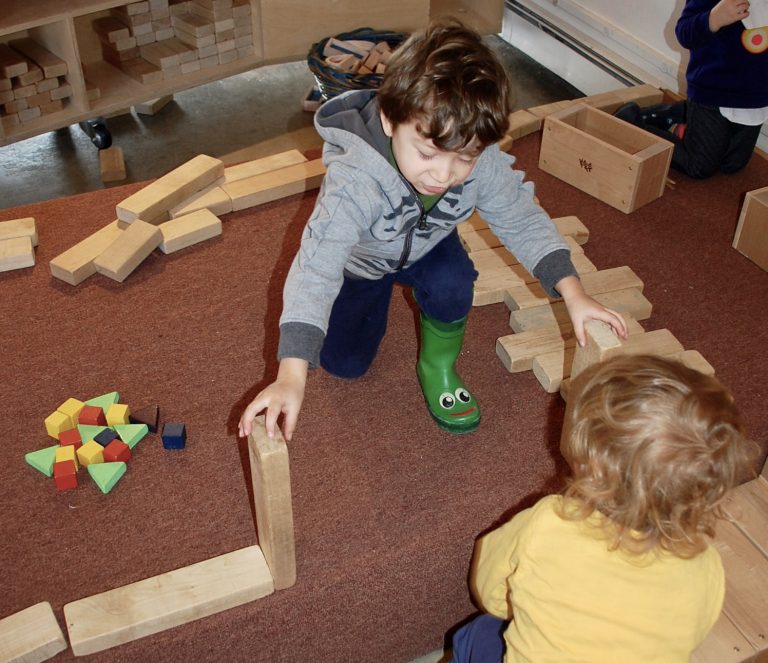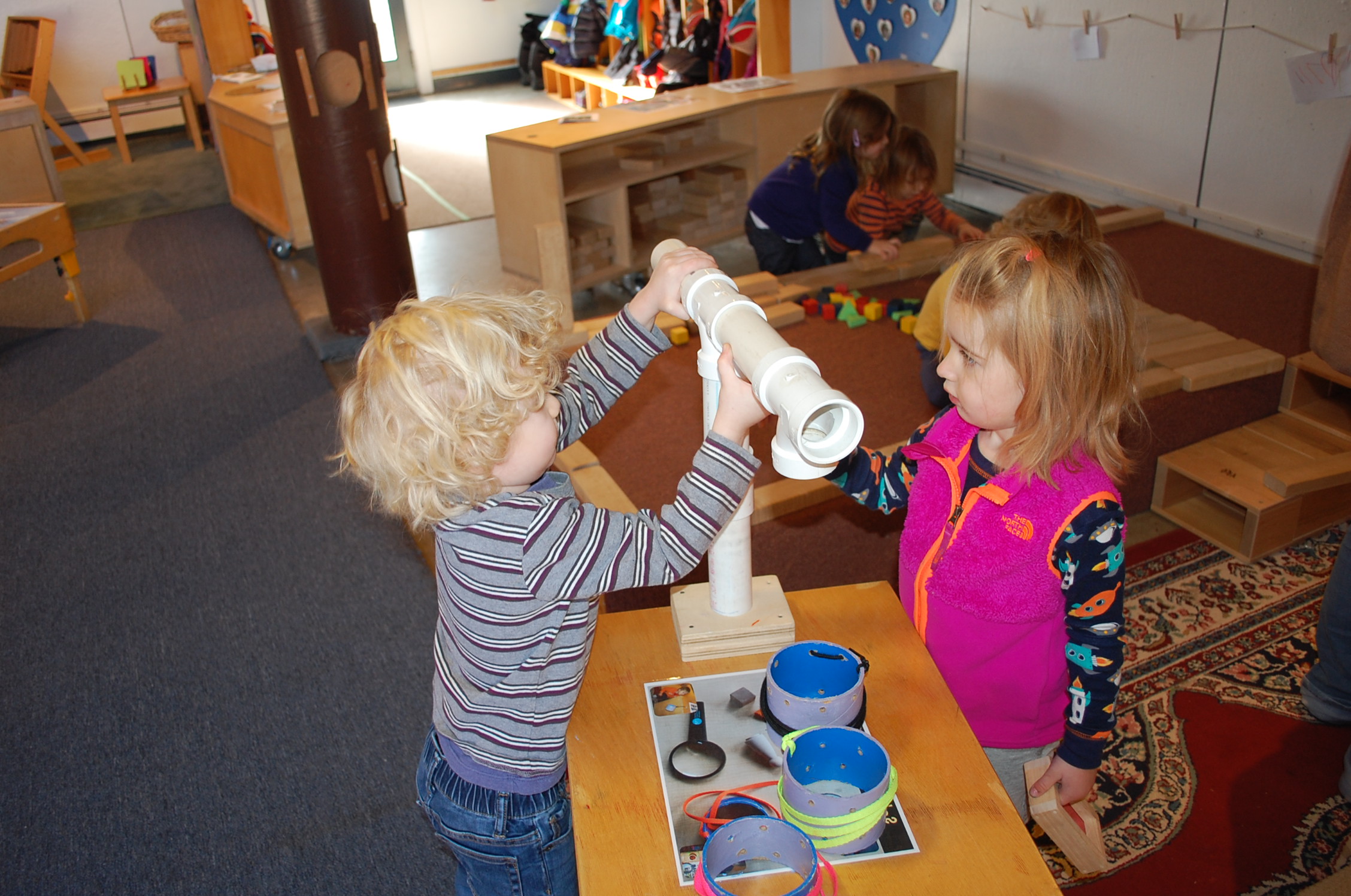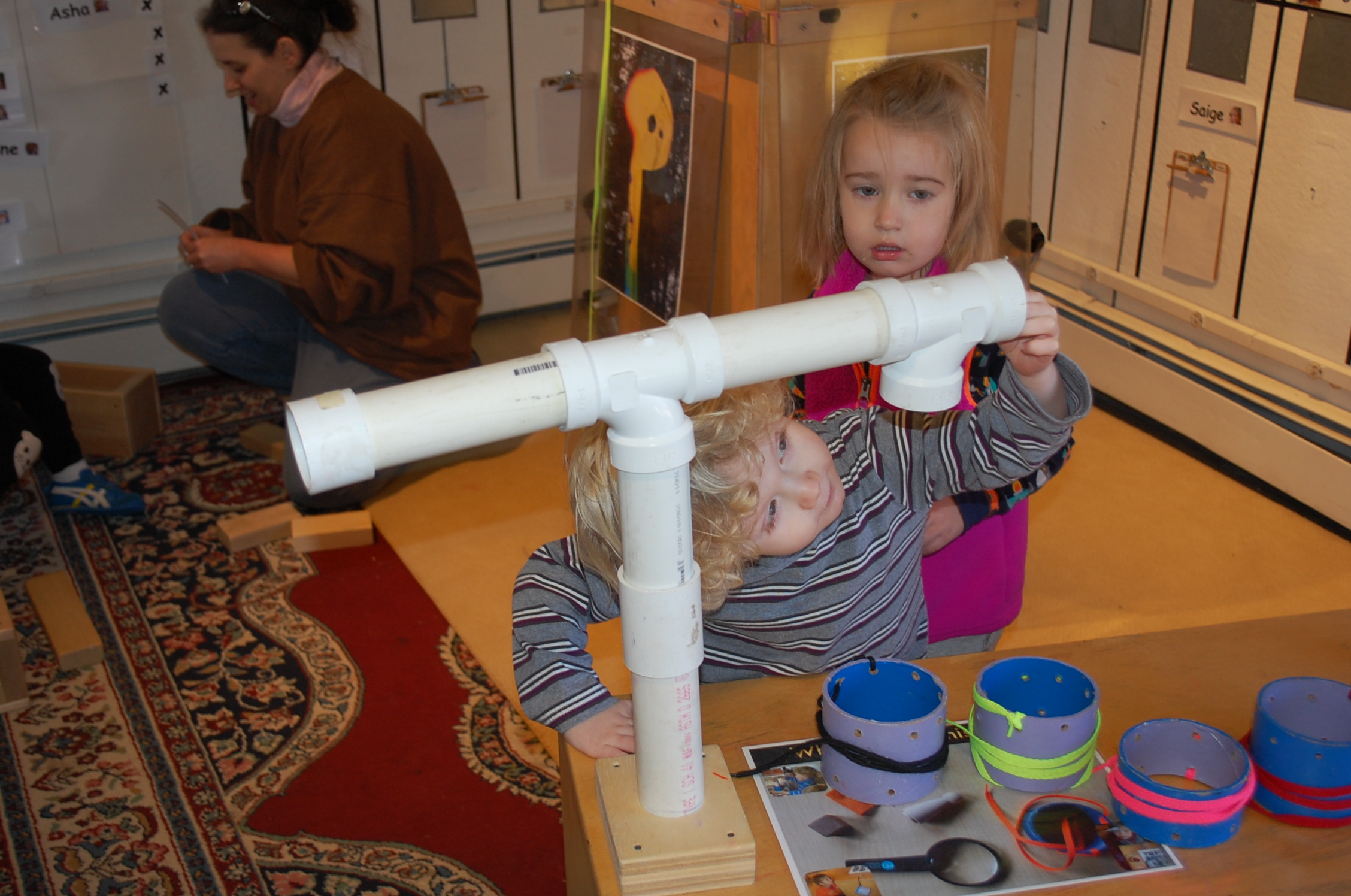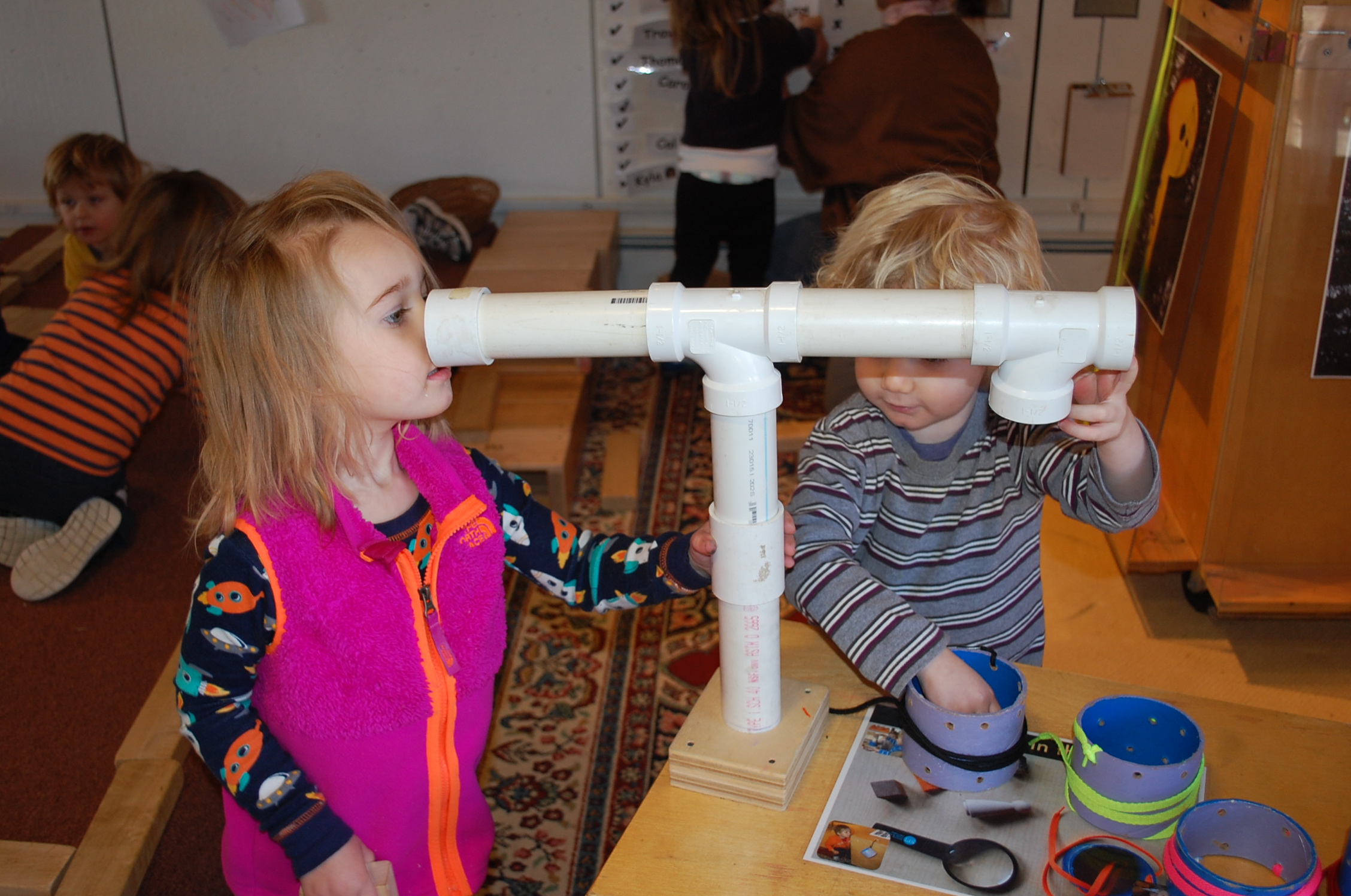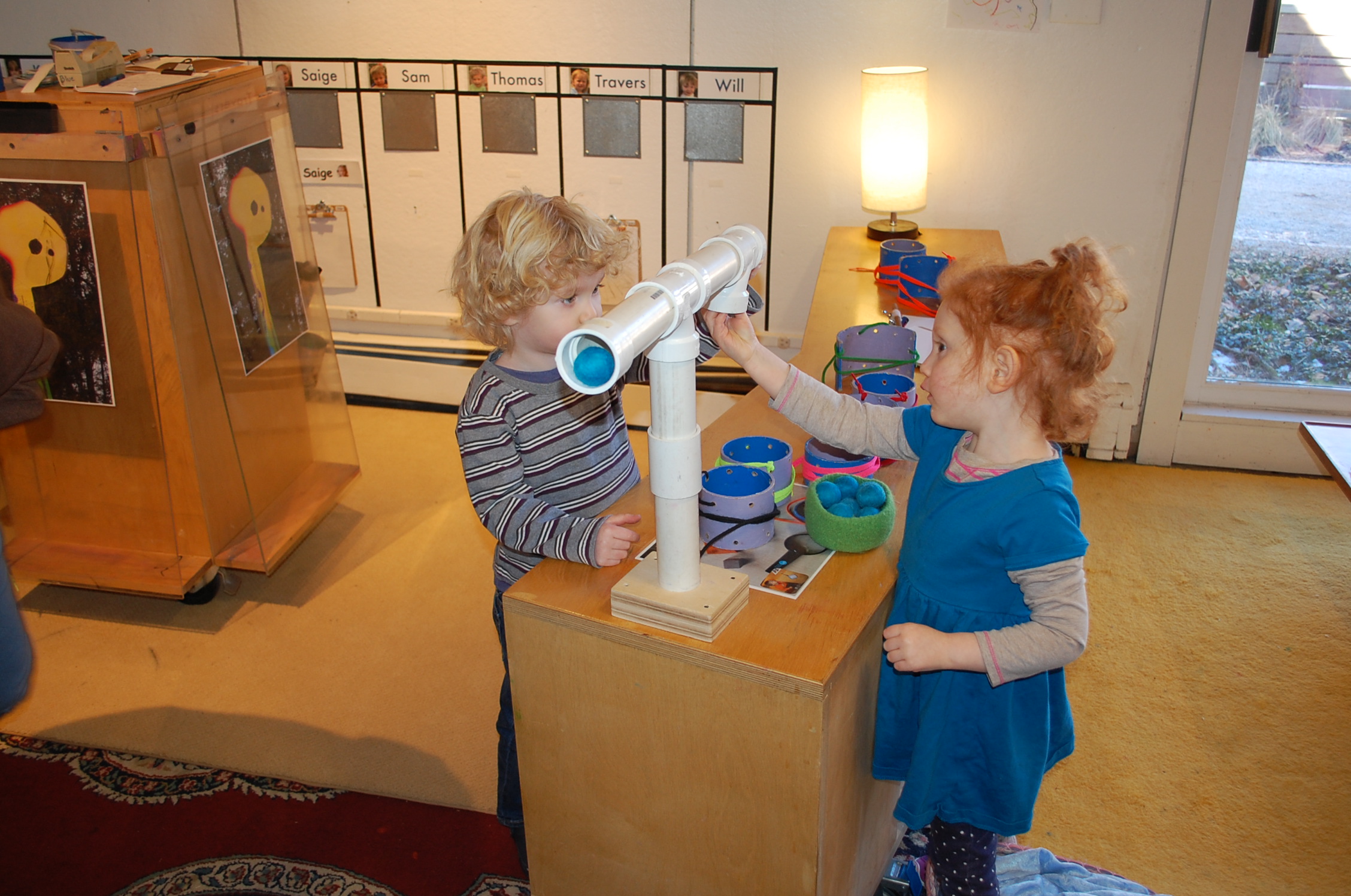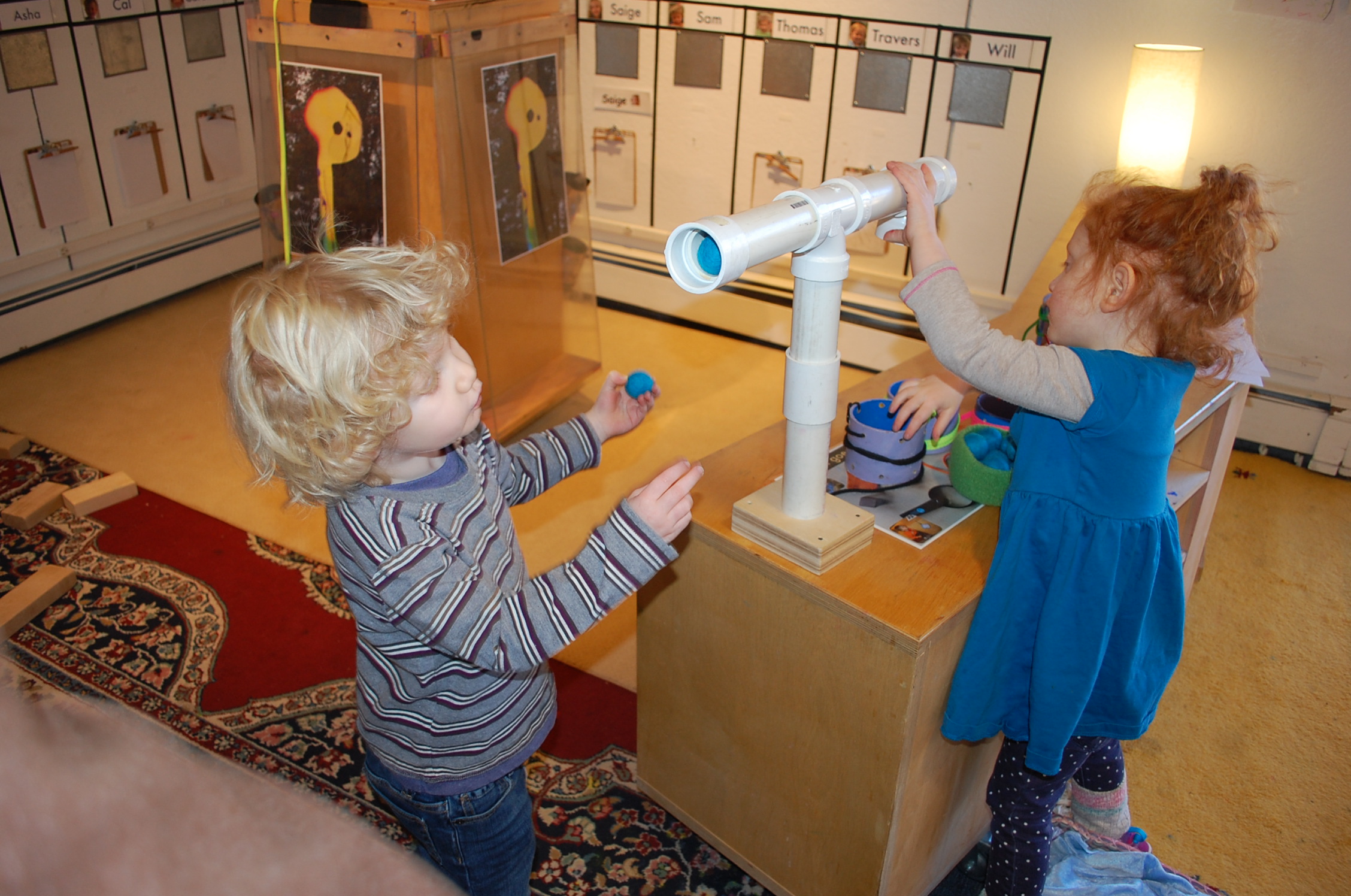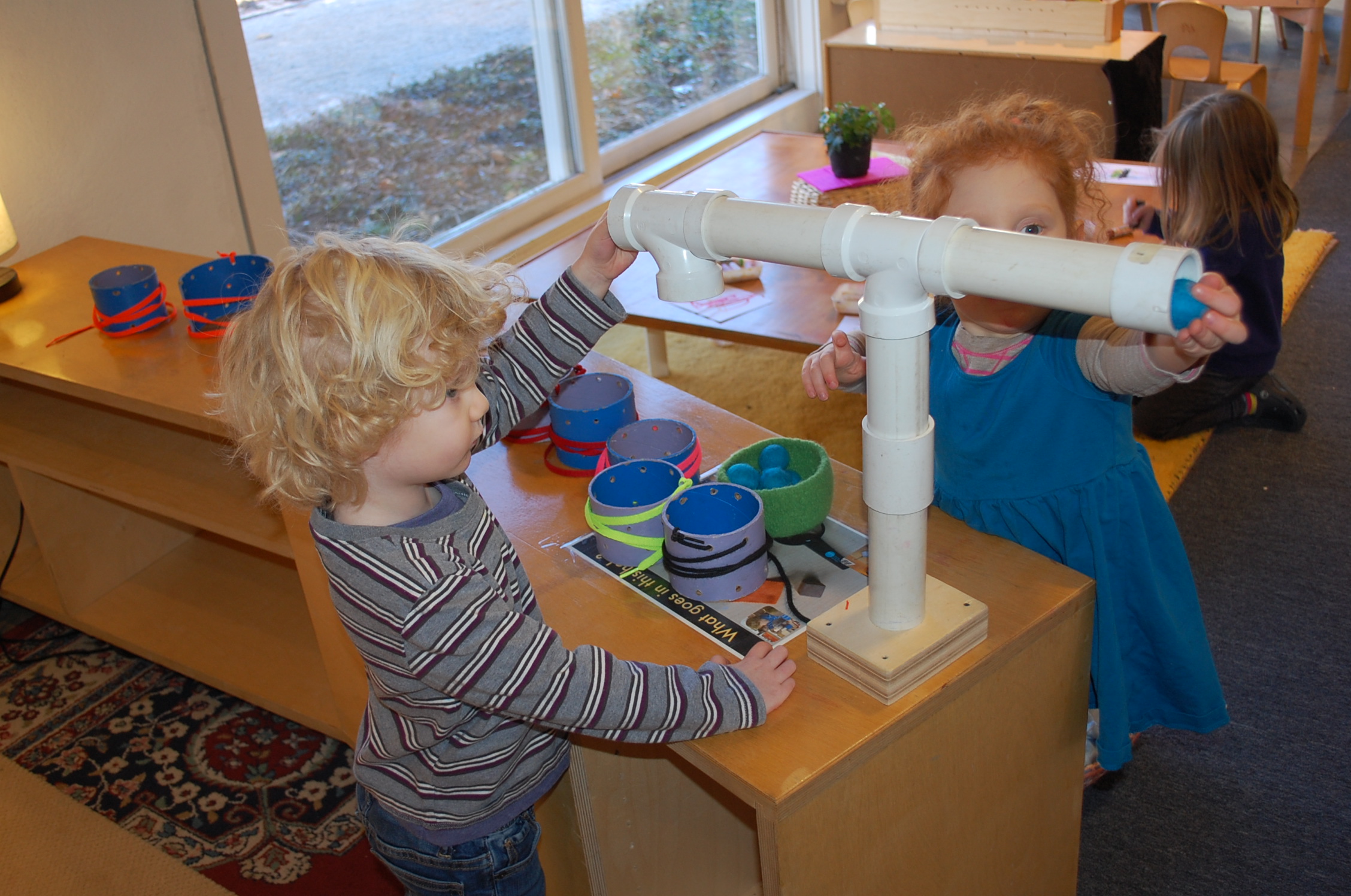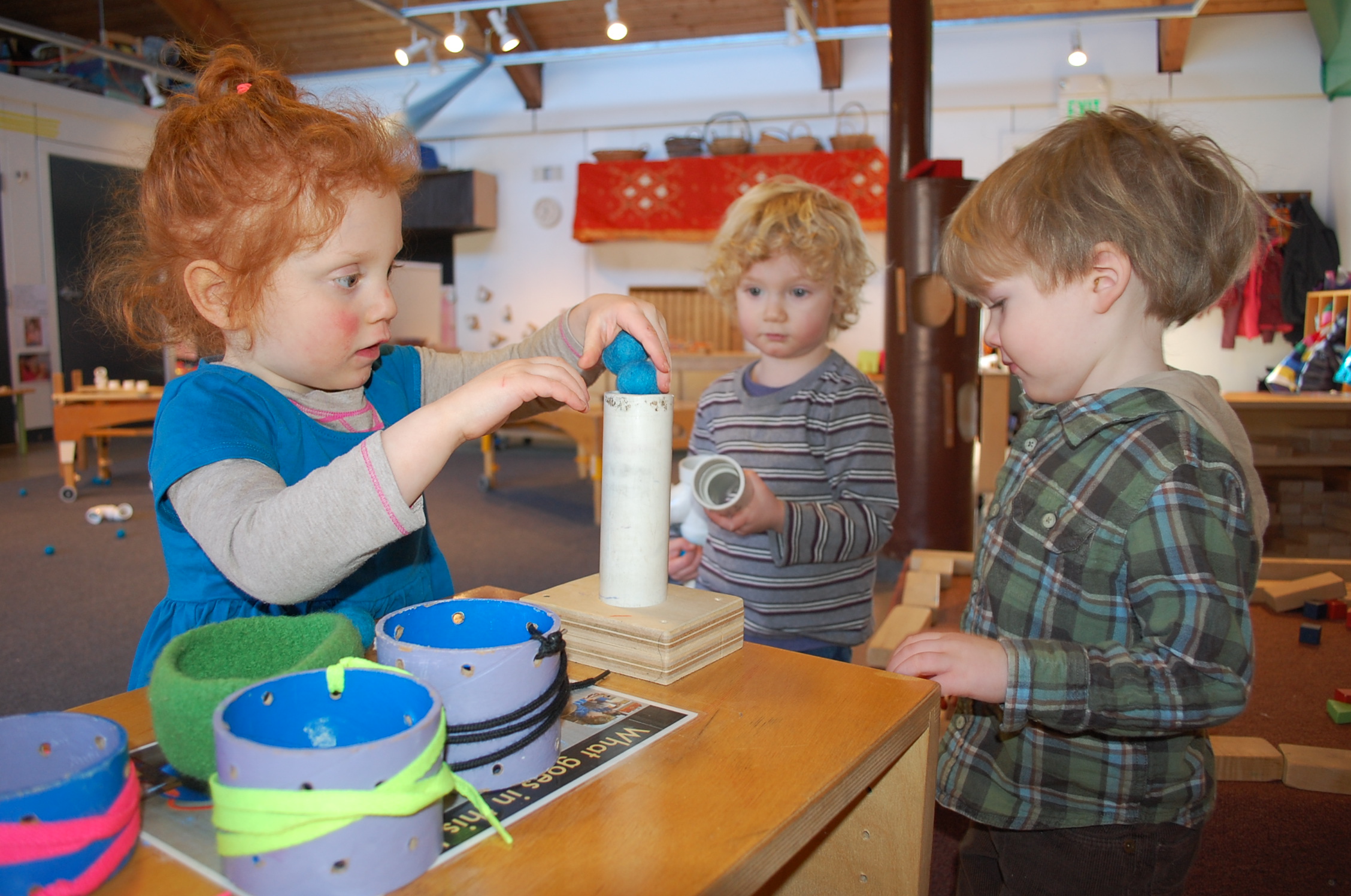As we approach the halfway mark of the school year, our sense of the arc of our year is necessarily intertwined with the arc of the children’s daily play. When each day begins, children enter and explore, often in solitary play, fairly peacefully. As time passes, children interact more and squabbles erupt – now the real work takes place. Our materials and activities ultimately serve as a backdrop for social interaction and power plays. Noise and activity ramp up, bodies seem to be everywhere, arguments ensue. Children even create disagreements where none exist: “I like the color purple;” “No, I like the color purple.” And simple misunderstandings lead to hurt feelings, which are addressed as adults help the children talk to each other and sort out their plans. Kyla and Thomas have a clash of ideas in the blocks area, only to discover that they both want to build tiger cages, and once this is established, play continues harmoniously. Thomas lifts up blocks like a drawbridge when a gate is needed for tigers to come and go from the cage, and Travers objects, but then uses the blocks in the same manner, clearly liking Thomas’ idea and adopting it. The arc of the play is unfolding over the course of the morning, and it takes time. So every day we teachers are torn: do we stop play to have snack and go outside, or let the play continue? How can we break up this tiger cage play when conflicts have been resolved and the play is on a wonderful roll? Yet if we don’t break it up, we won’t get outside until late.
One strategy we have begun trying is calling an early first meeting at which we ask who wants to go outside, and this often creates a nice division of the class, with more room and less bodies both inside and out, resulting in some lovely interactions.
We’ve also been changing the timing of when Emily Silet is joining us, and this week she came early, at about 9:20 on Thursday, and we all went for a (brisk!) walk in the sculpture park, finding the sculpture of the woman with the green face (Eve Celebrant) and continuing our walk all the way around the back of the museum, finding many sculptures along the way. This also resulted in an earlier snack; we understand that when we have a late snack, some children aren’t hungry for lunch, so we are aware of this and making changes.
Here are some interactions we’ve been seeing over the arc of our days.
